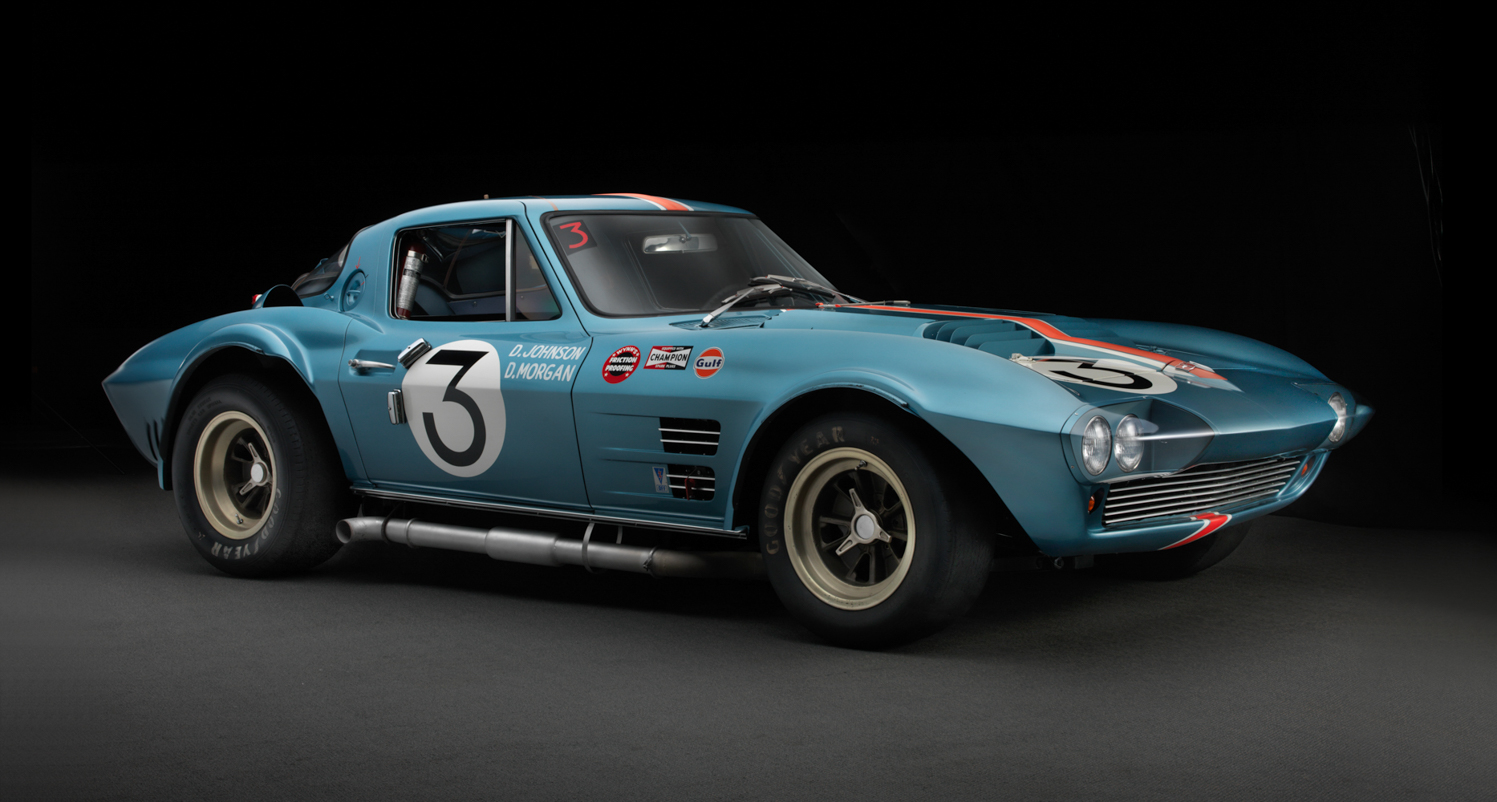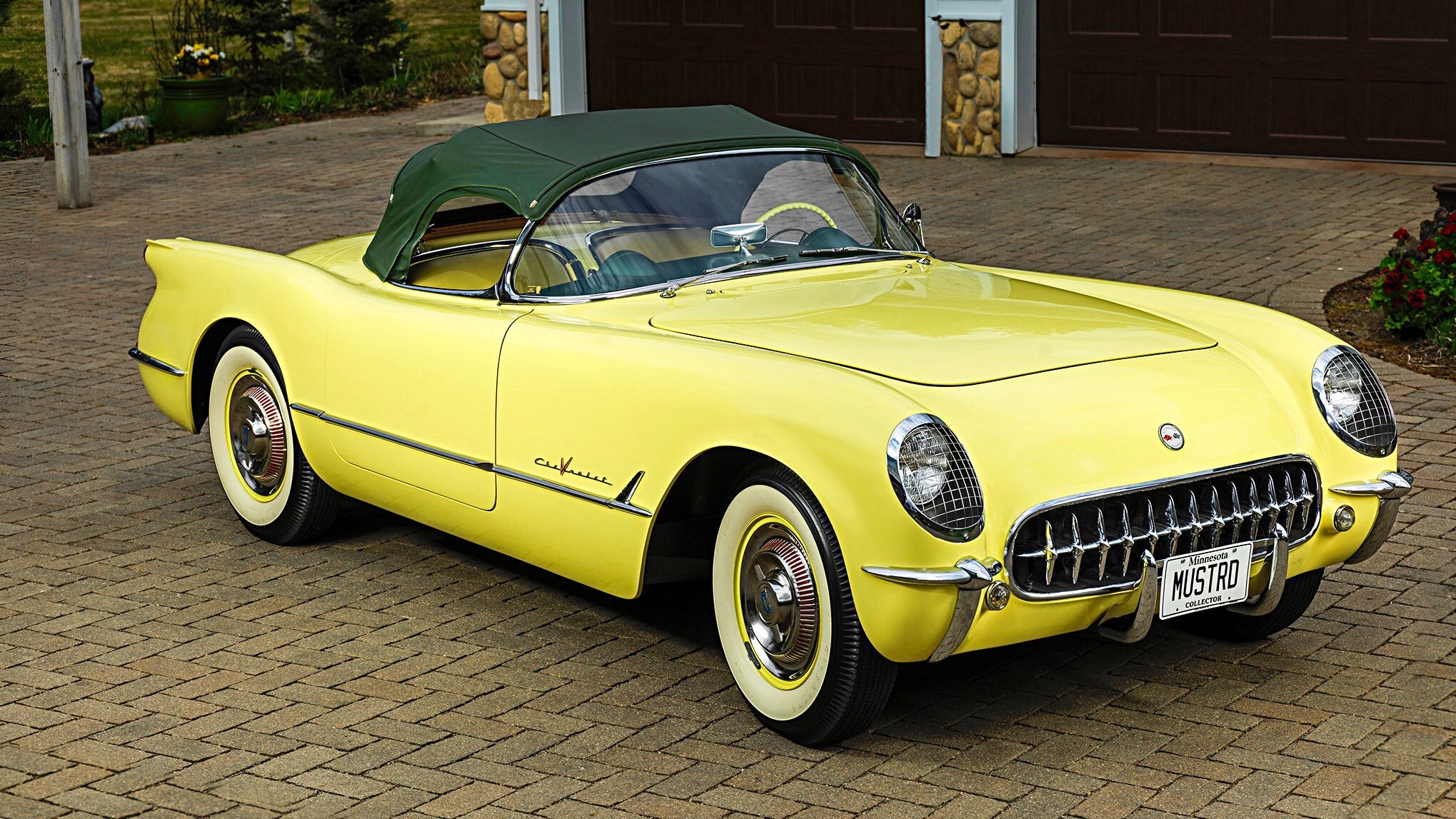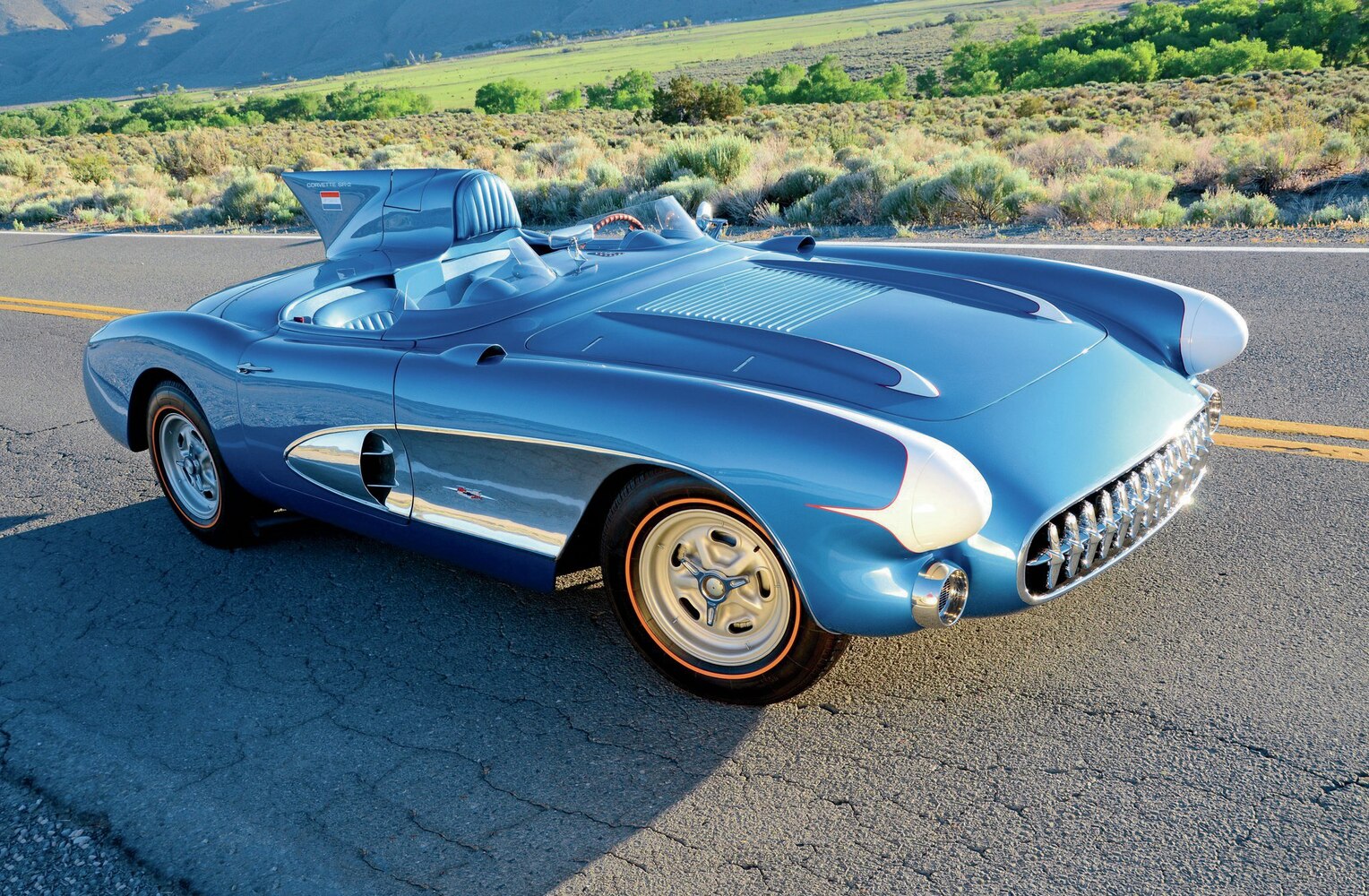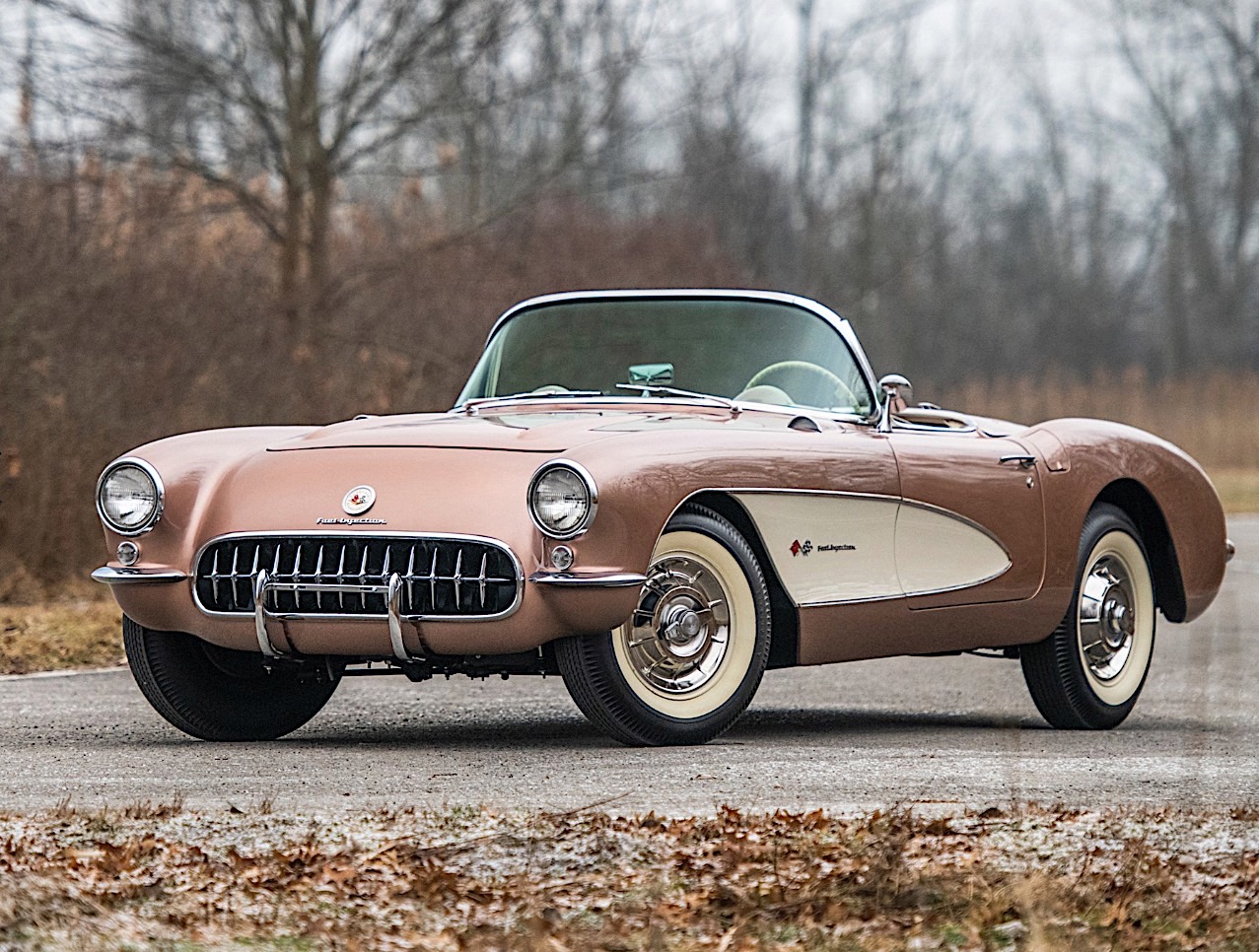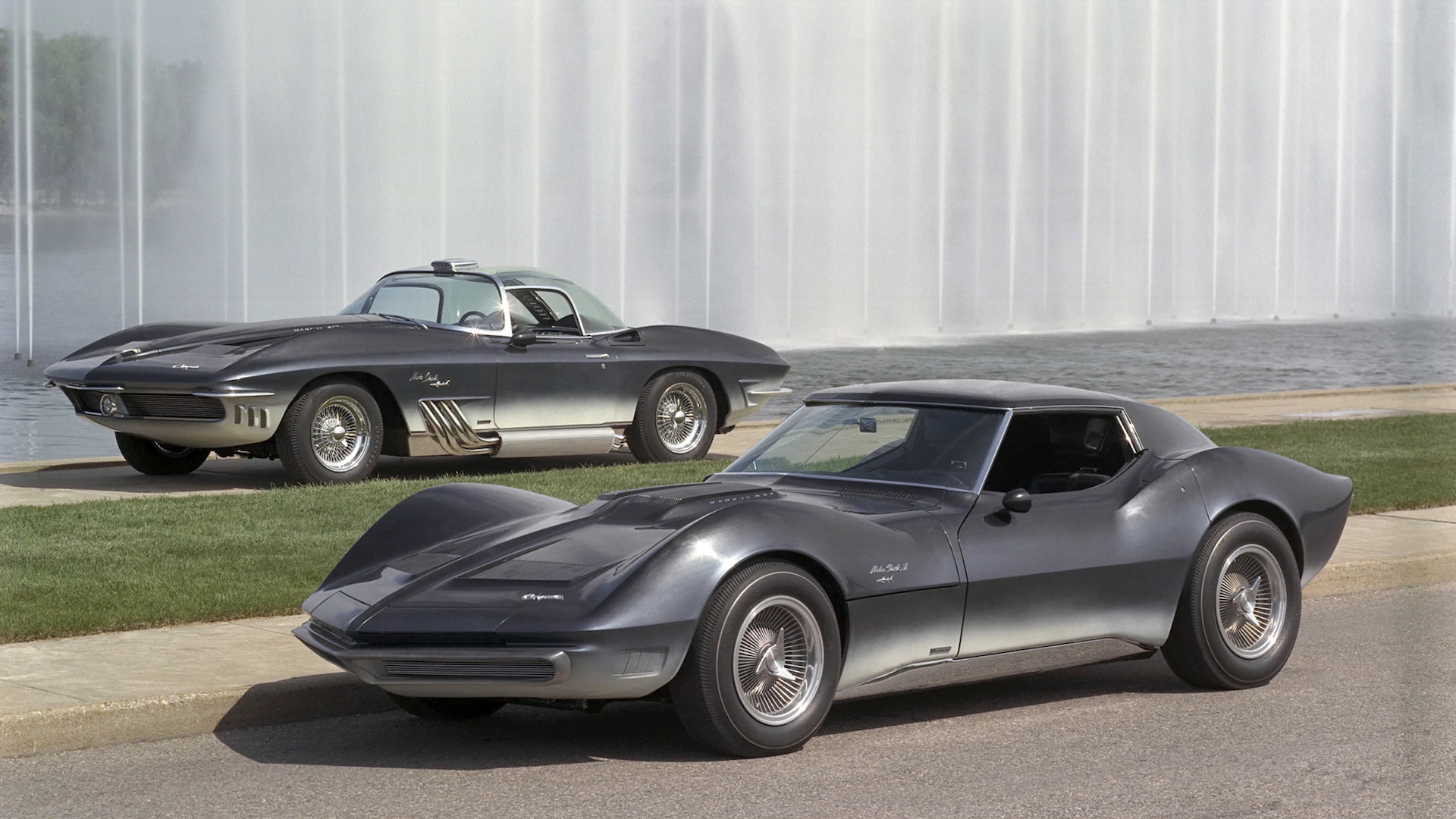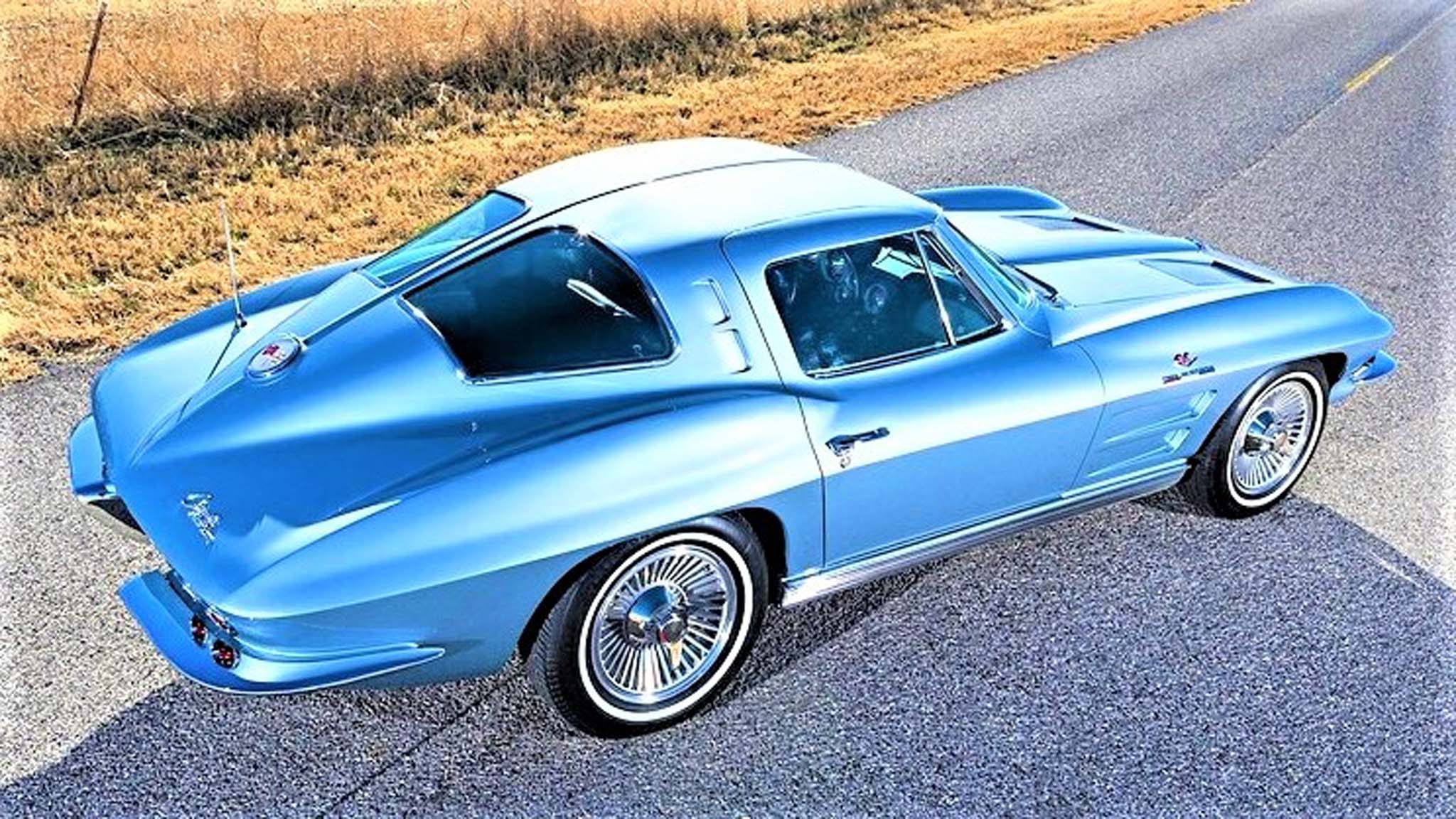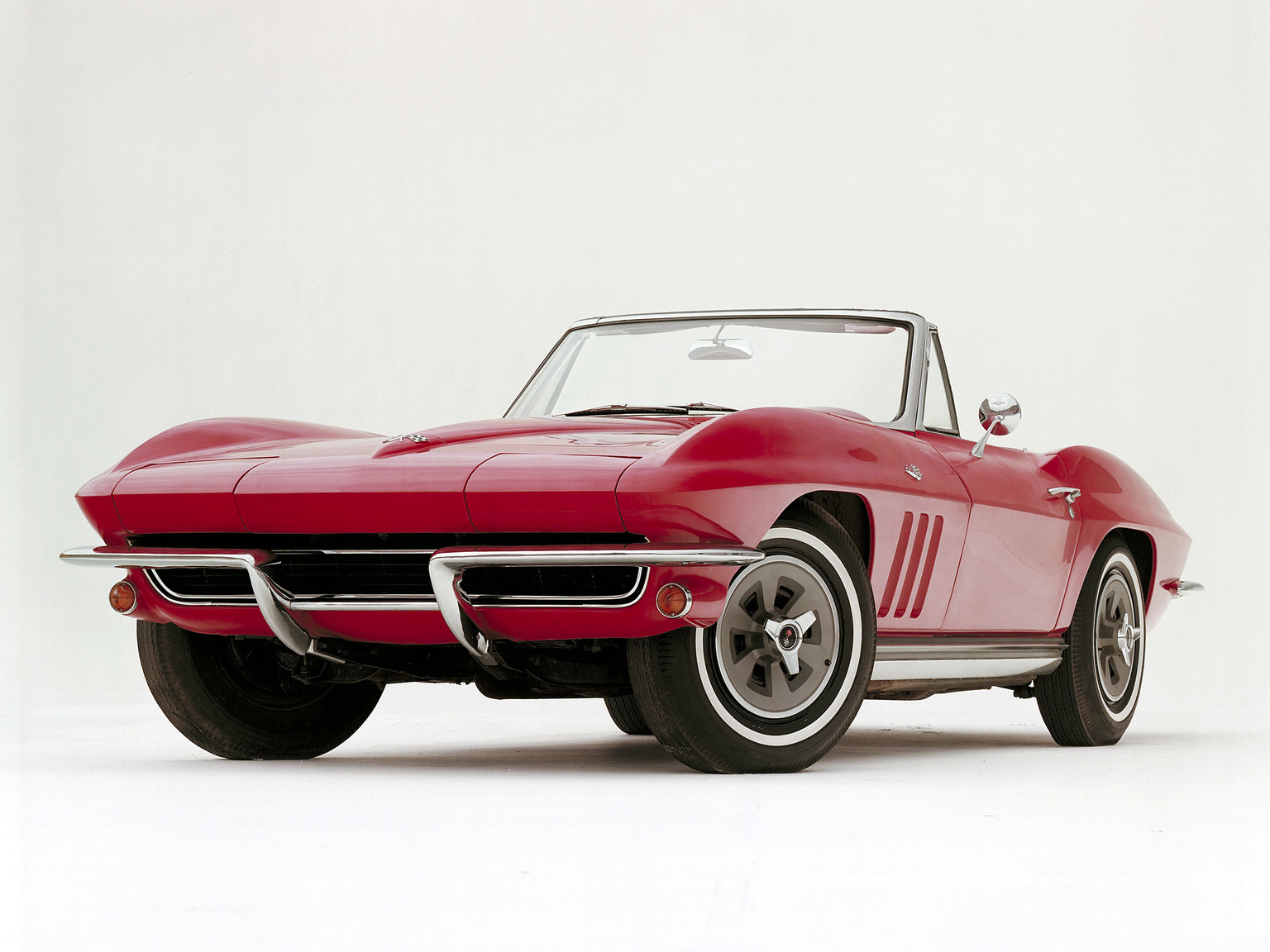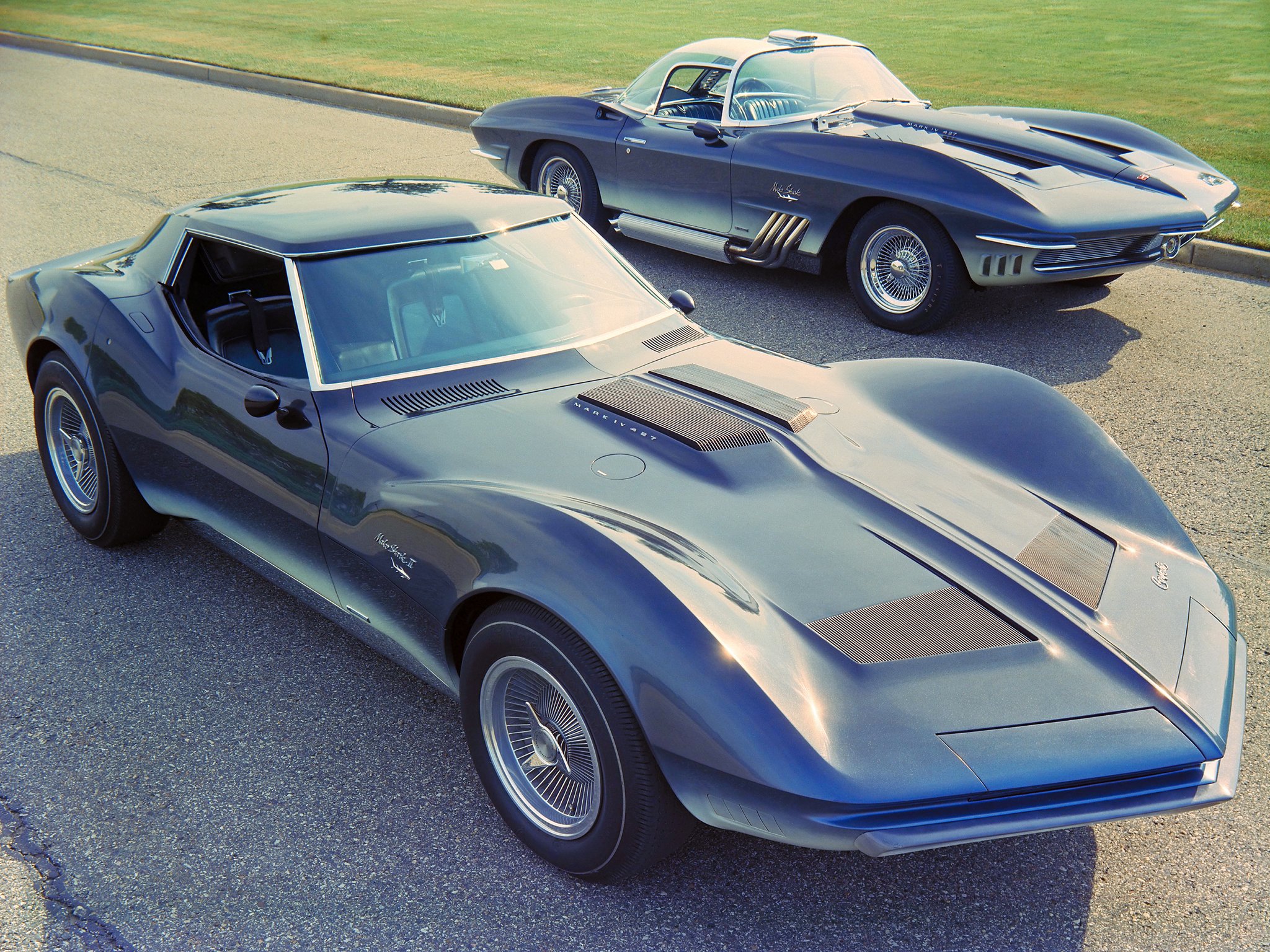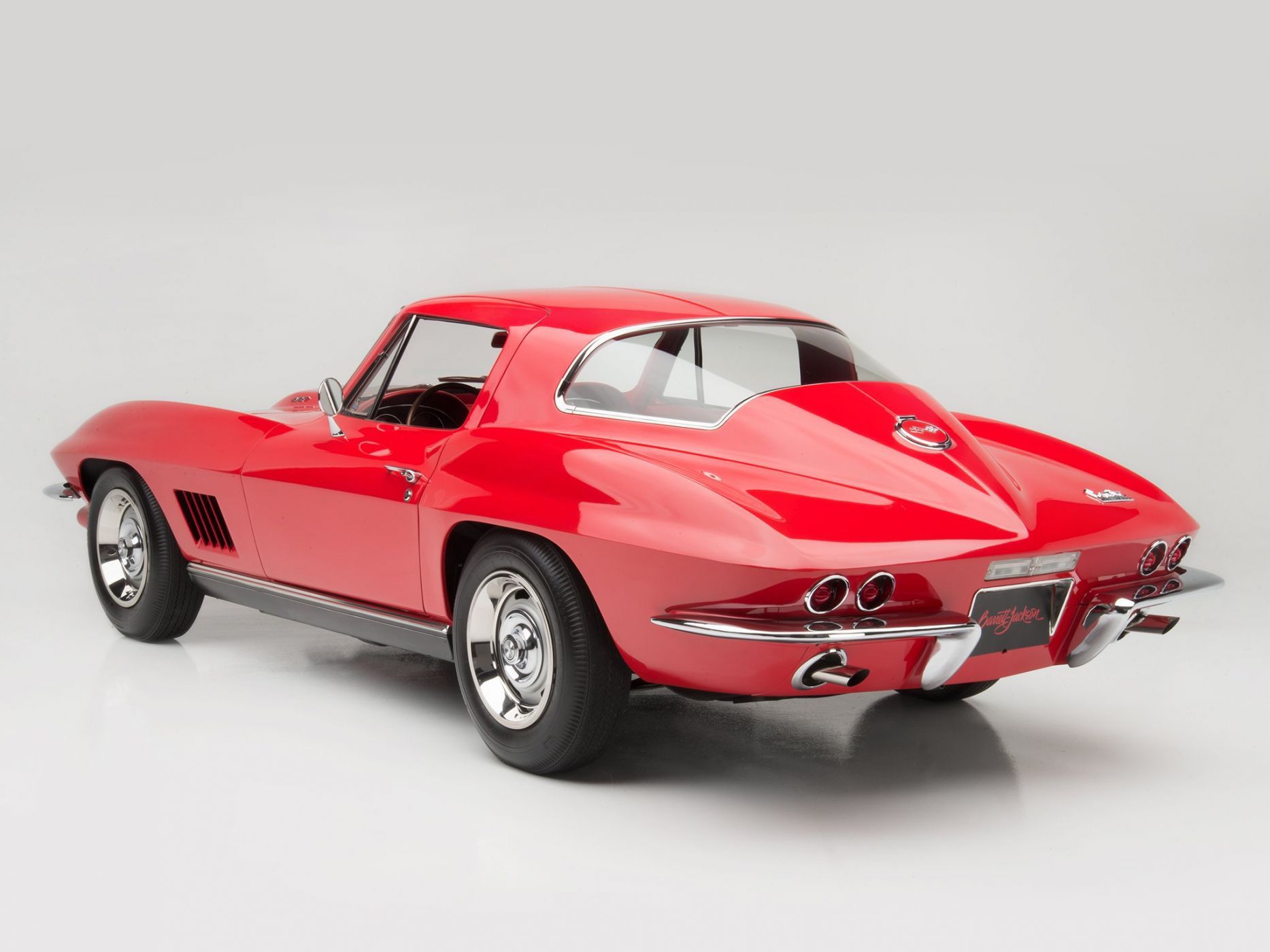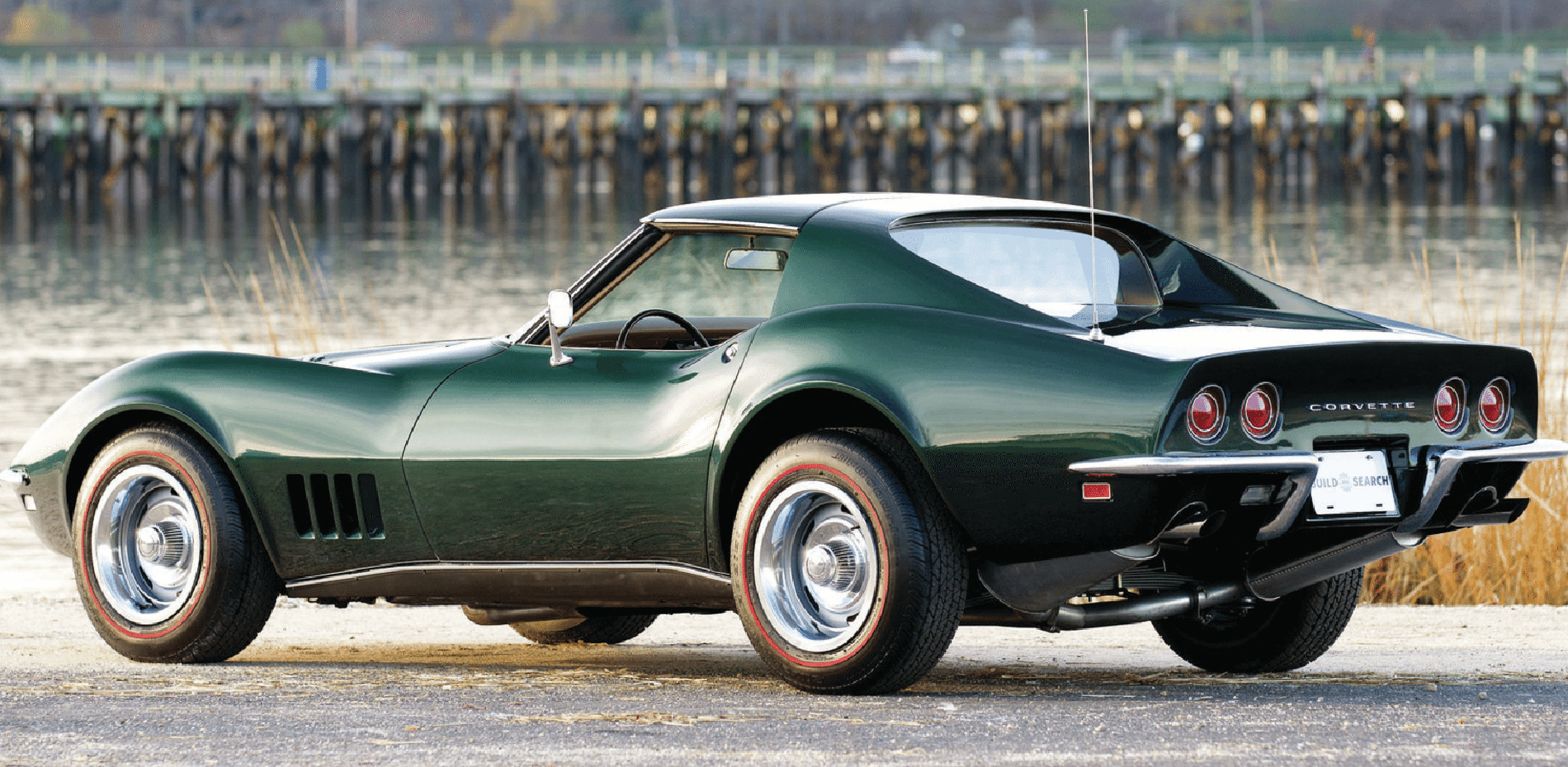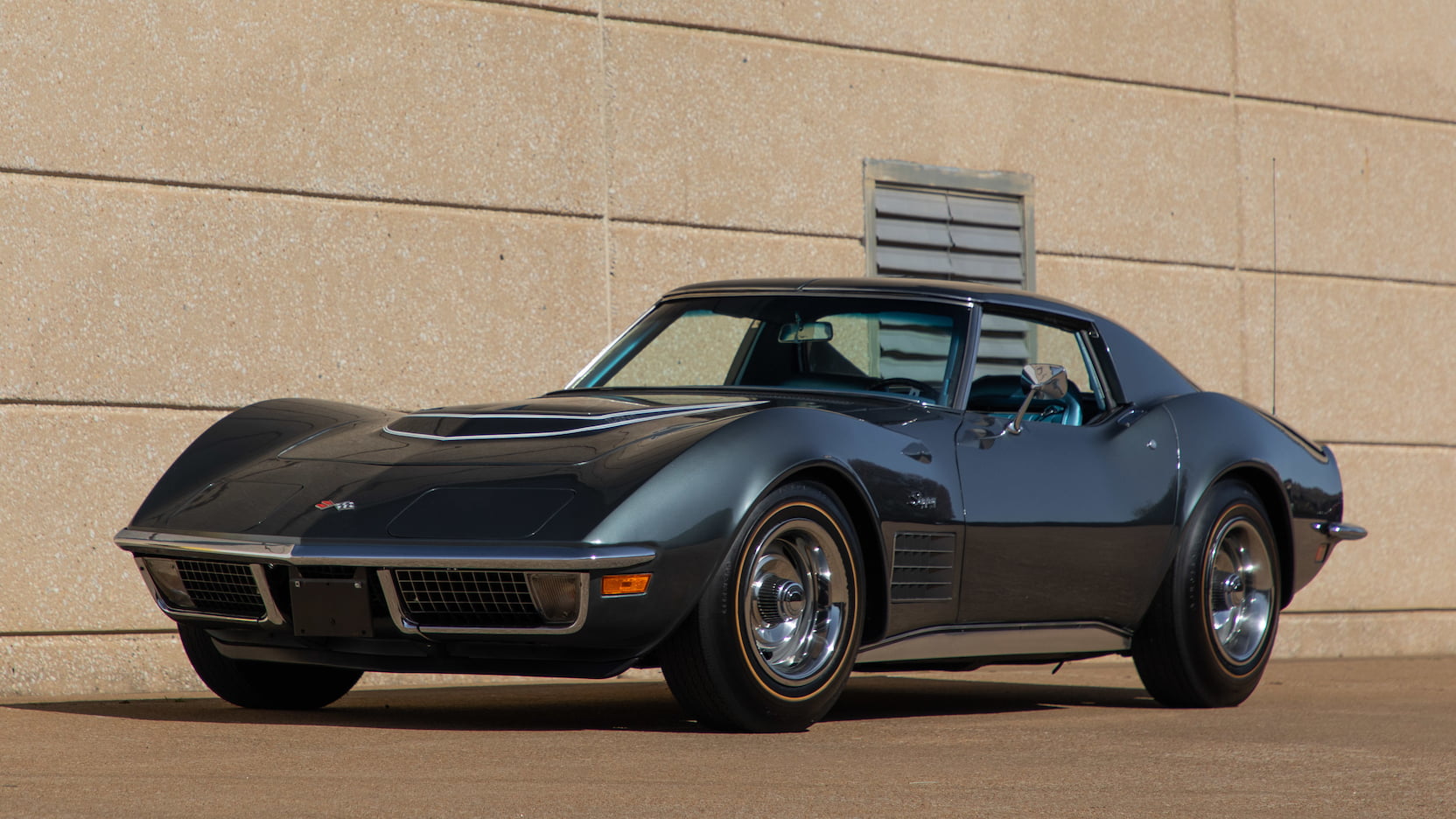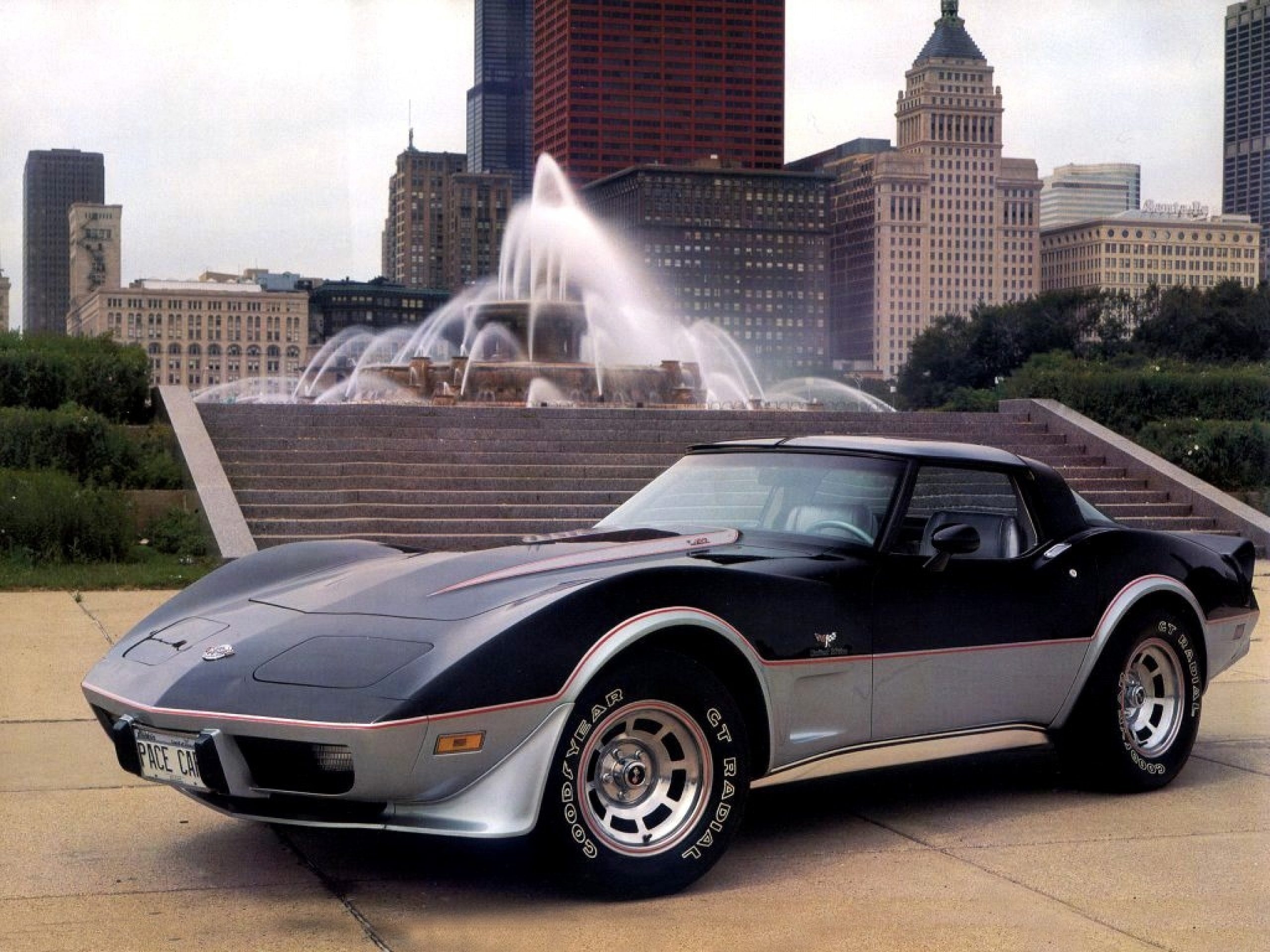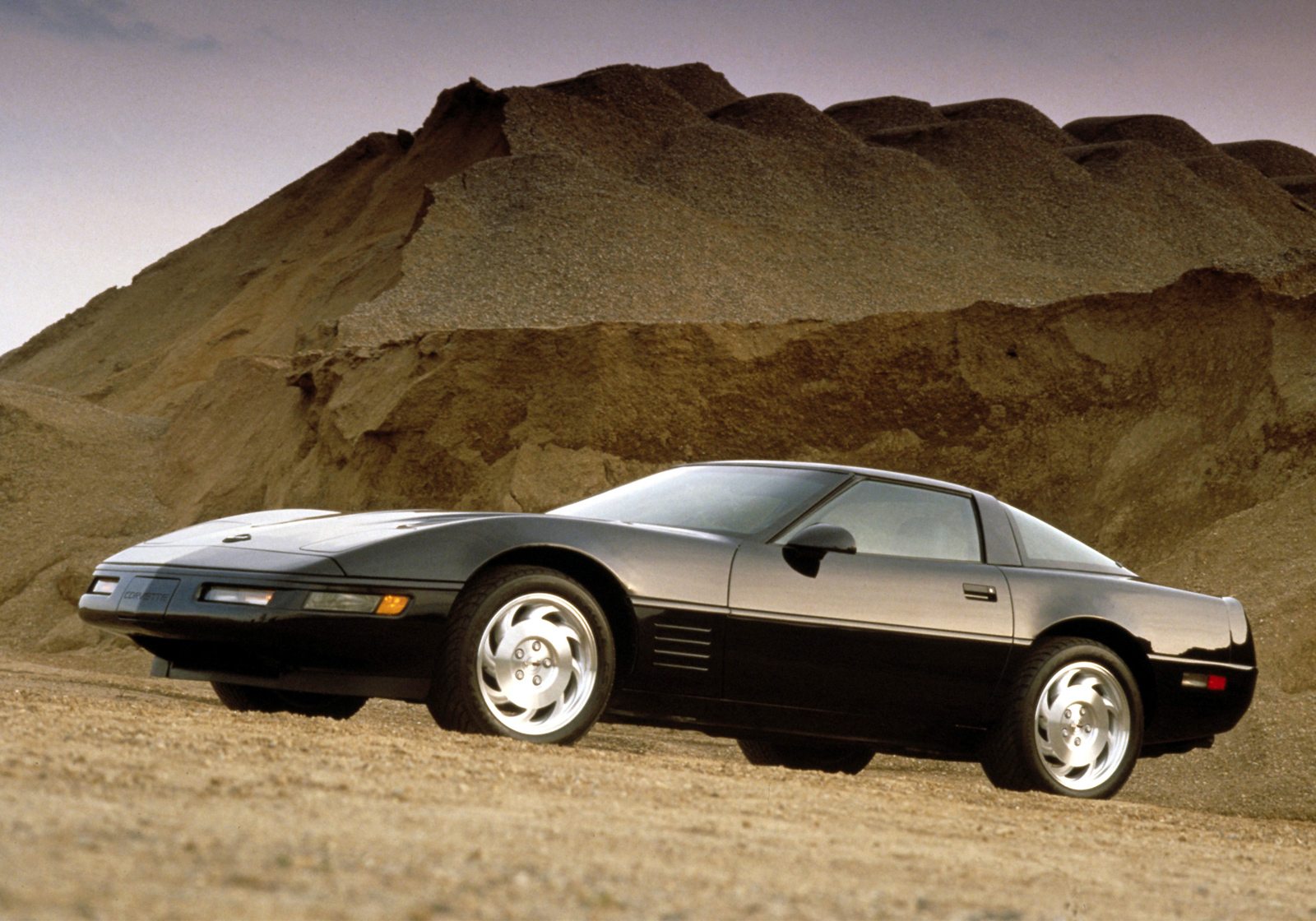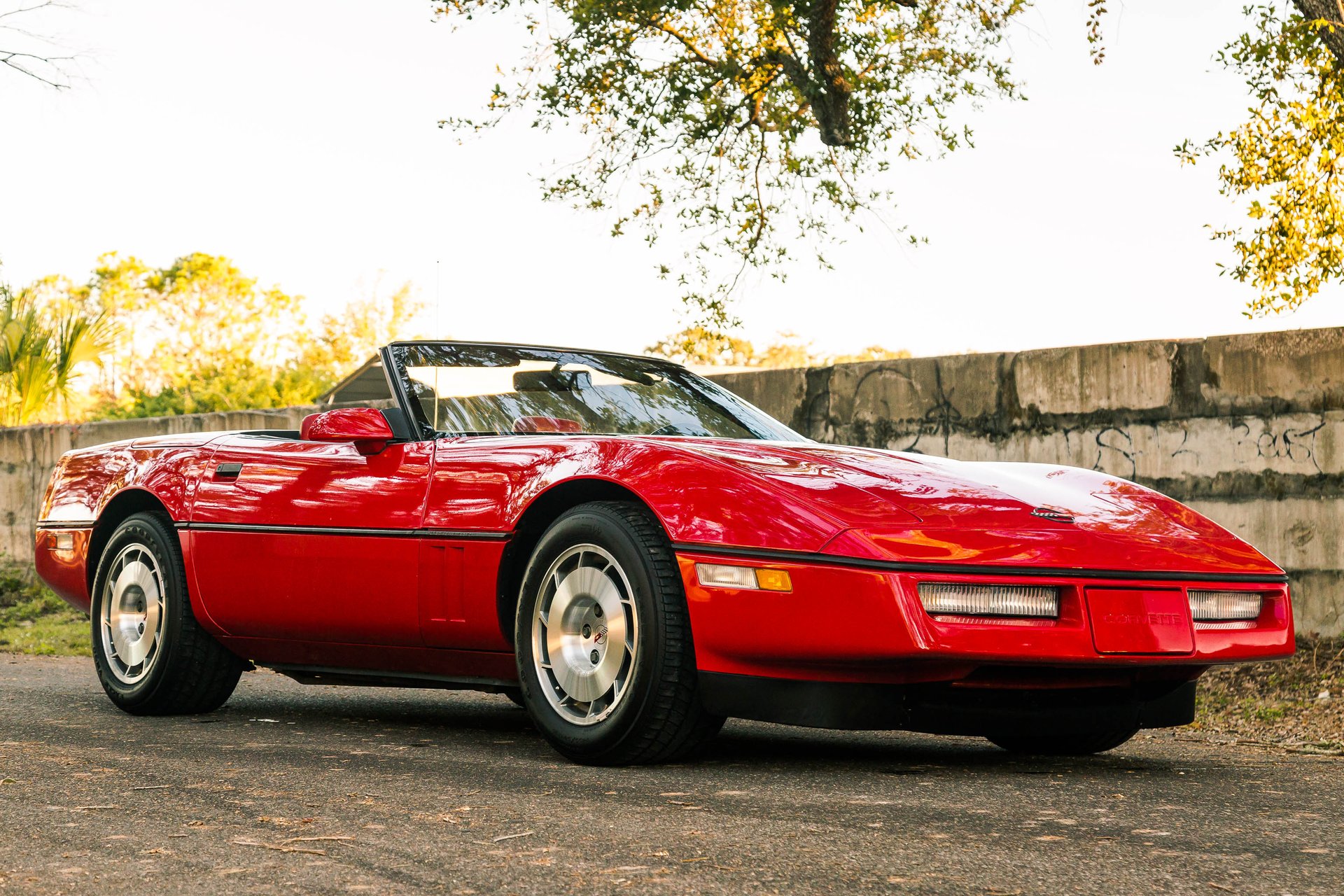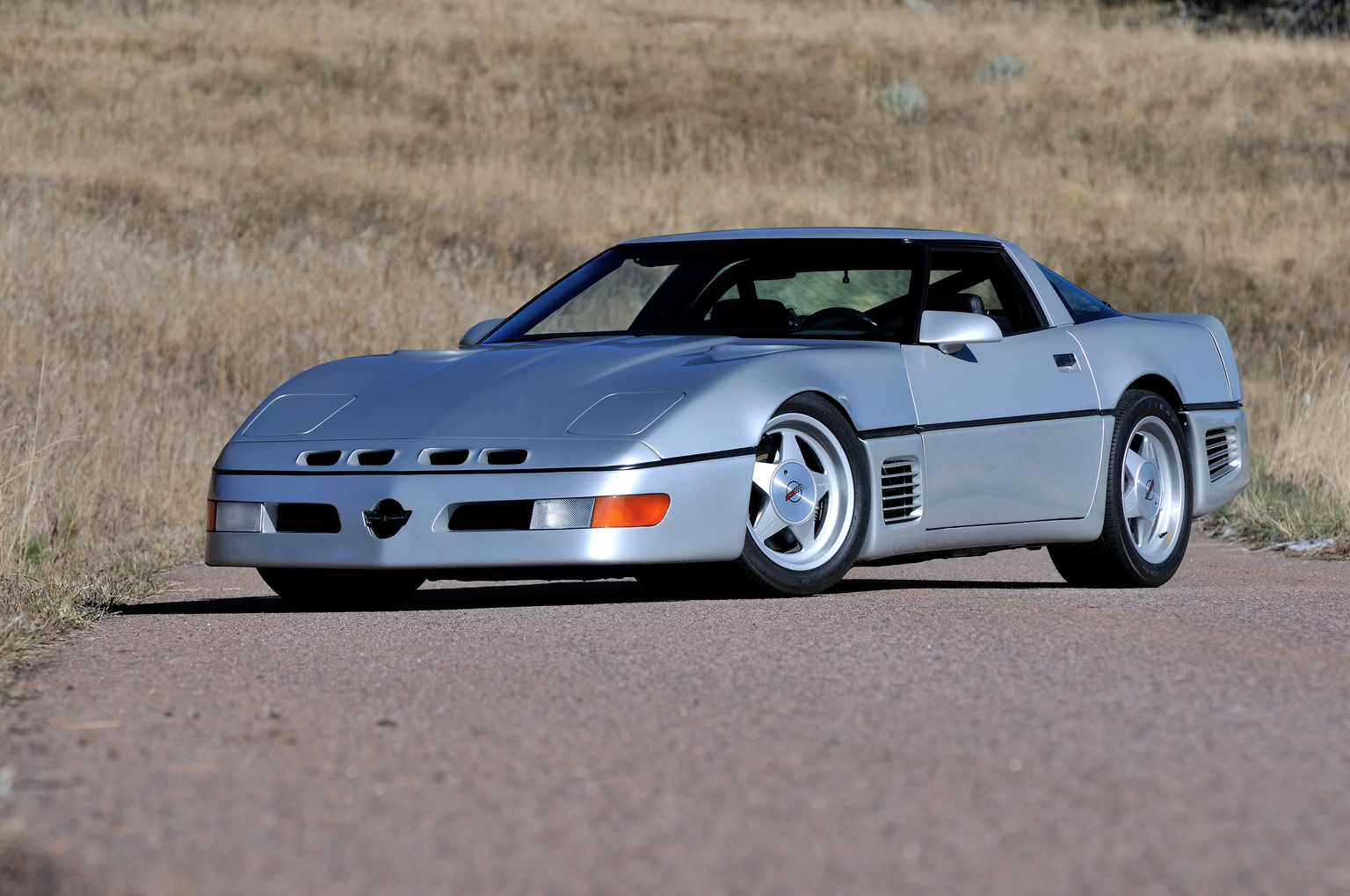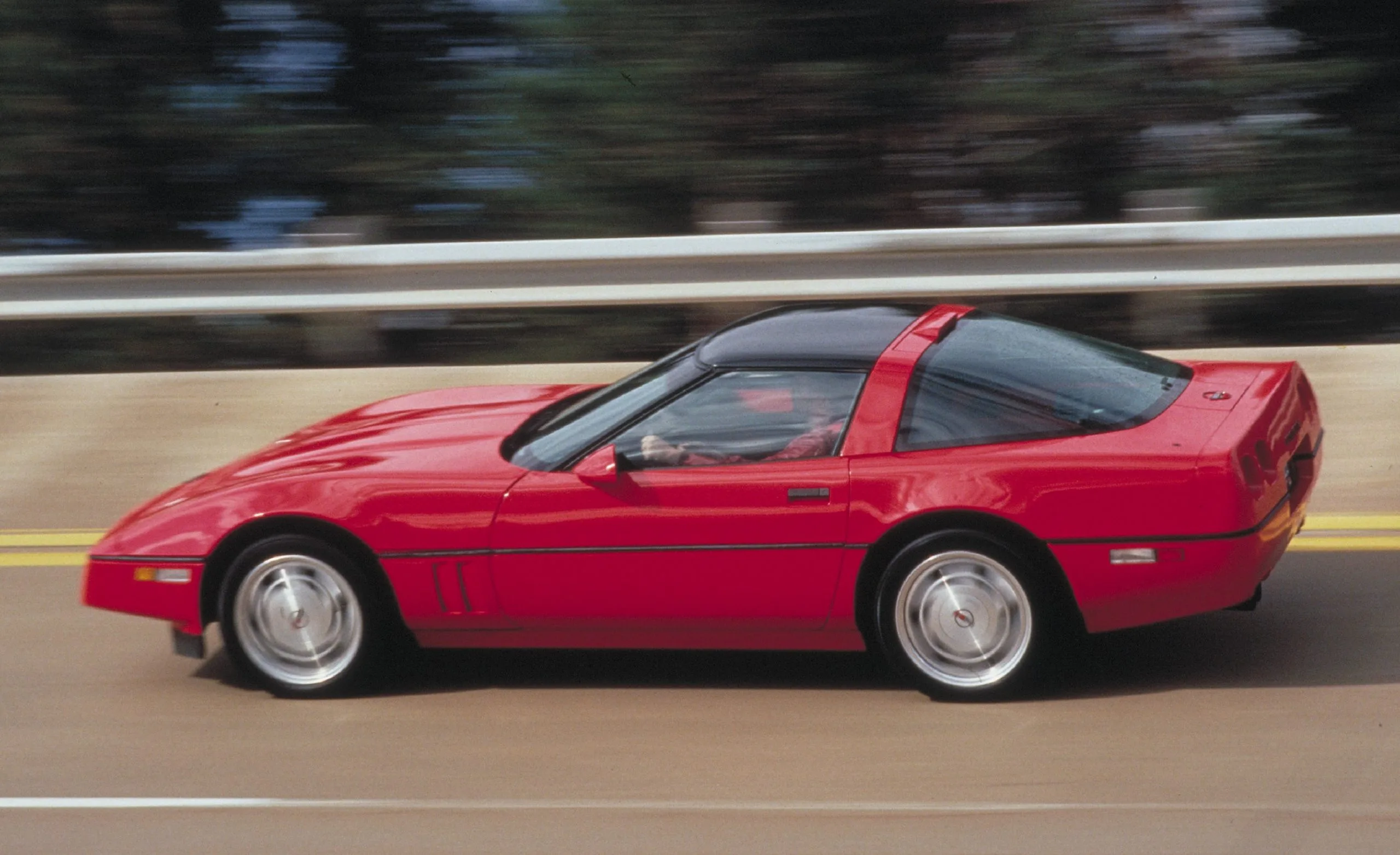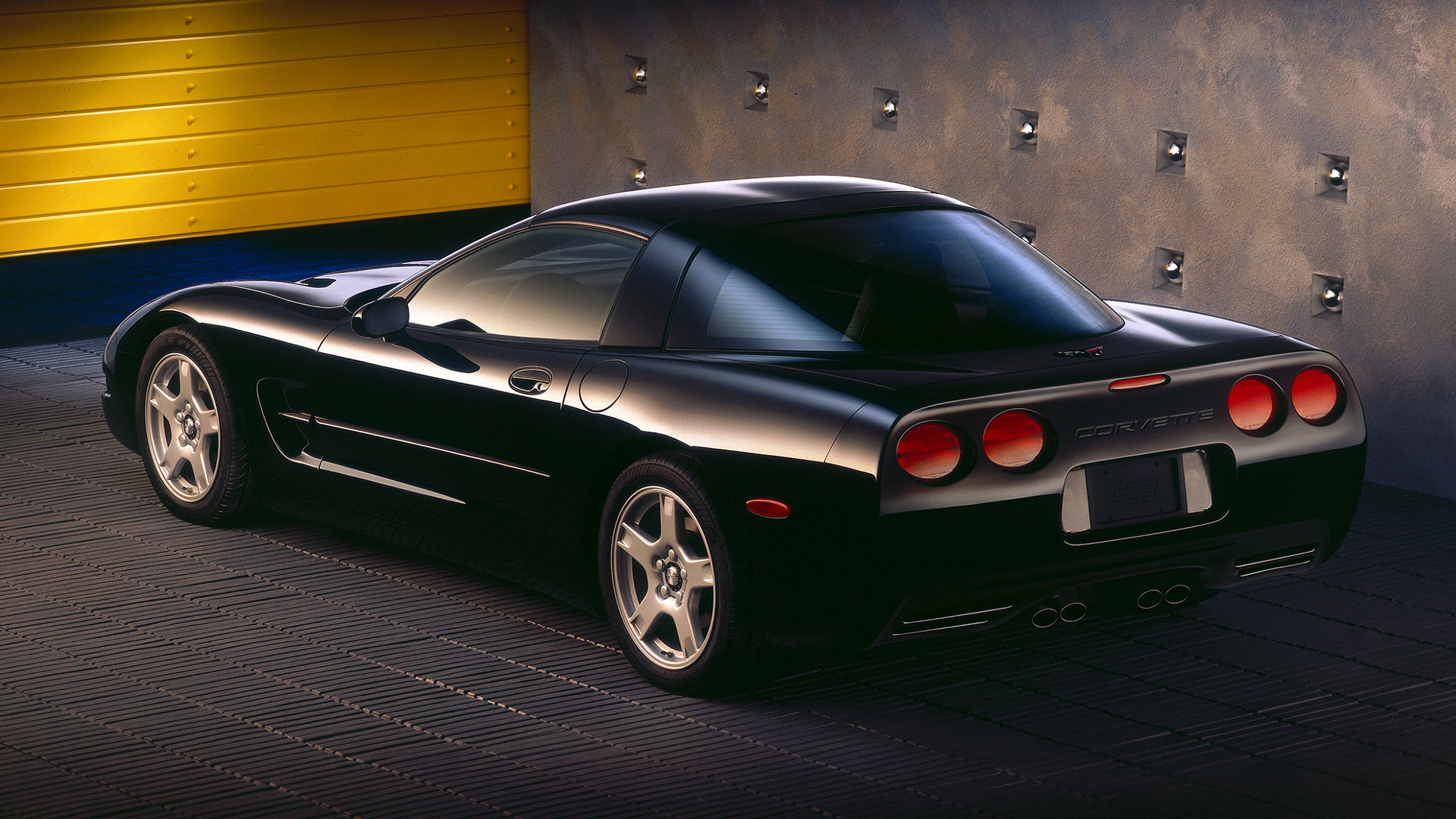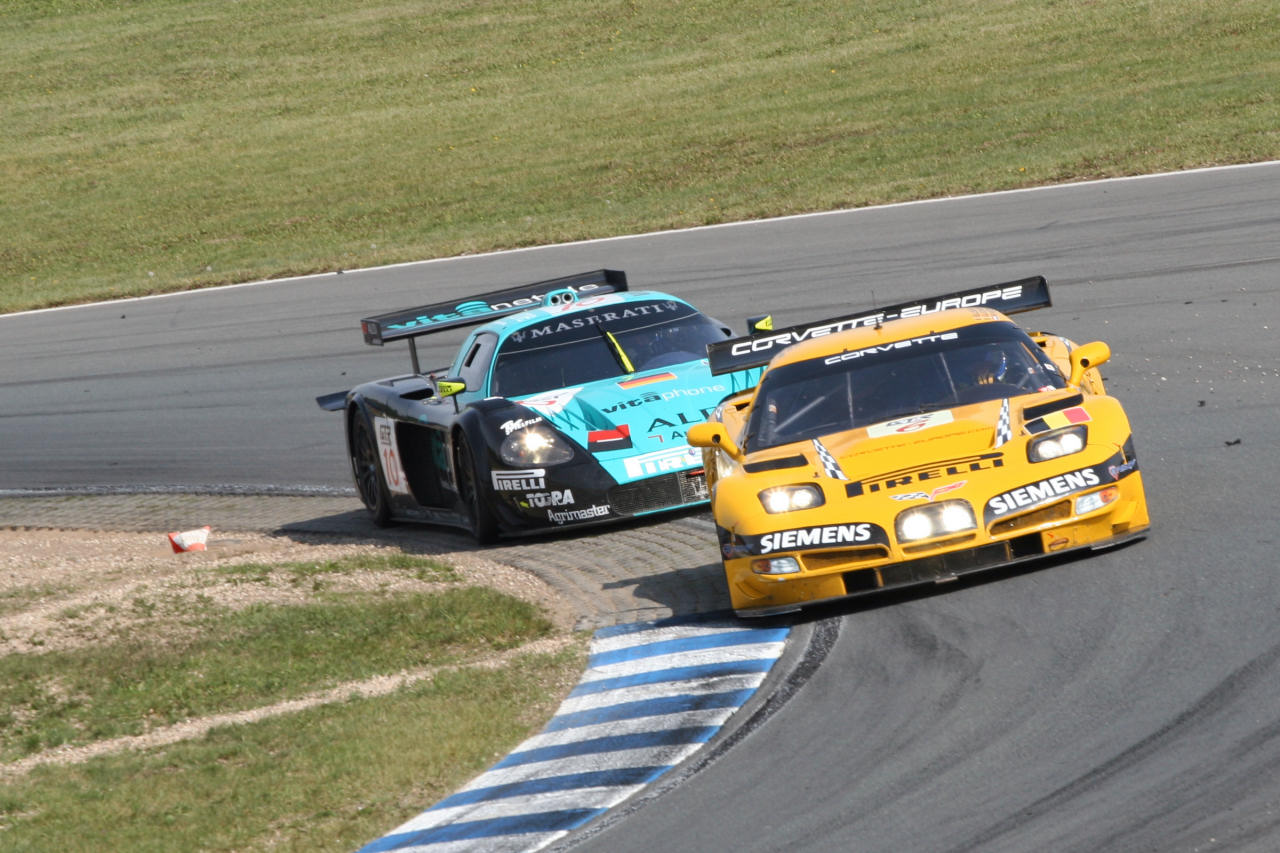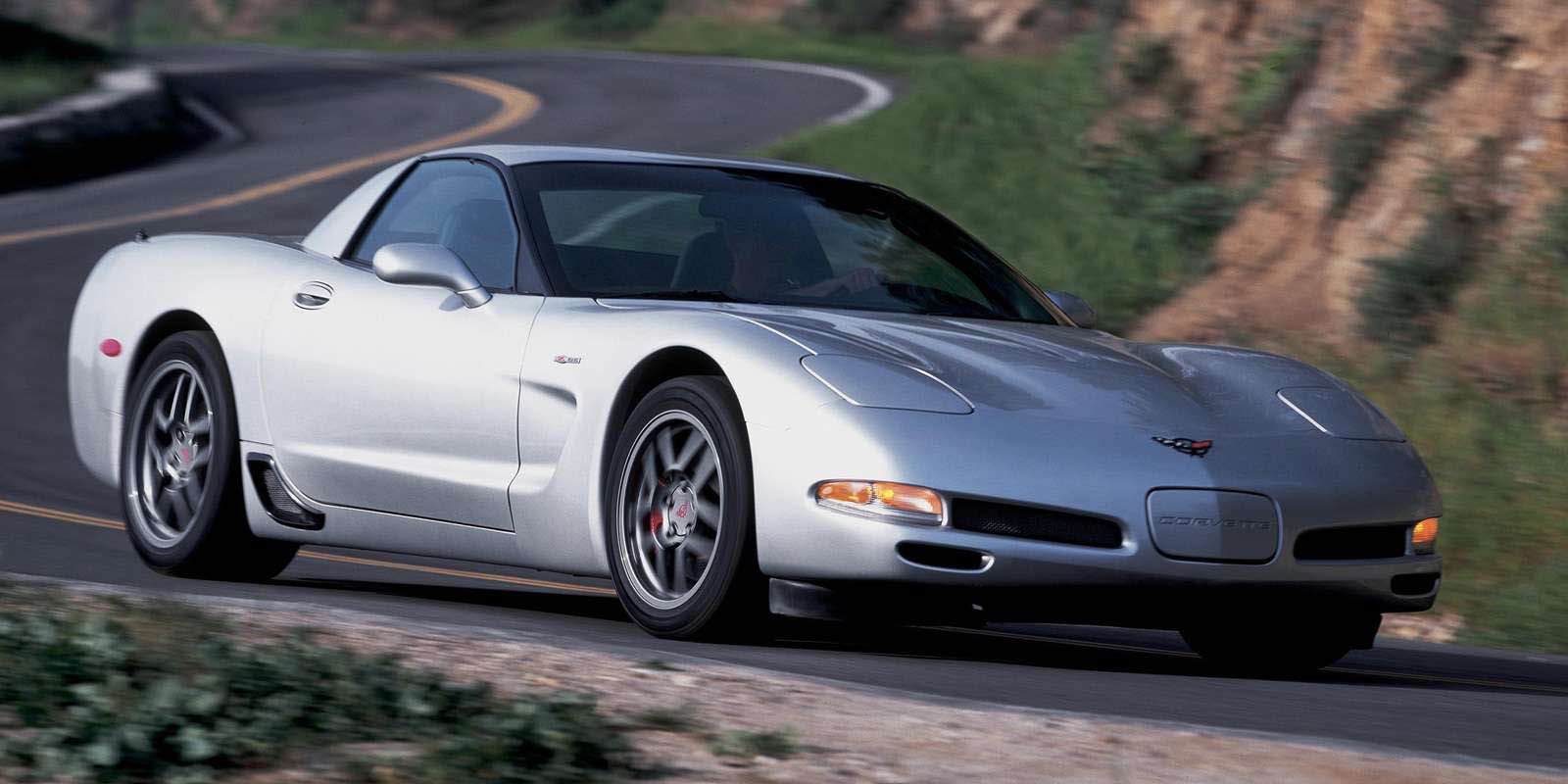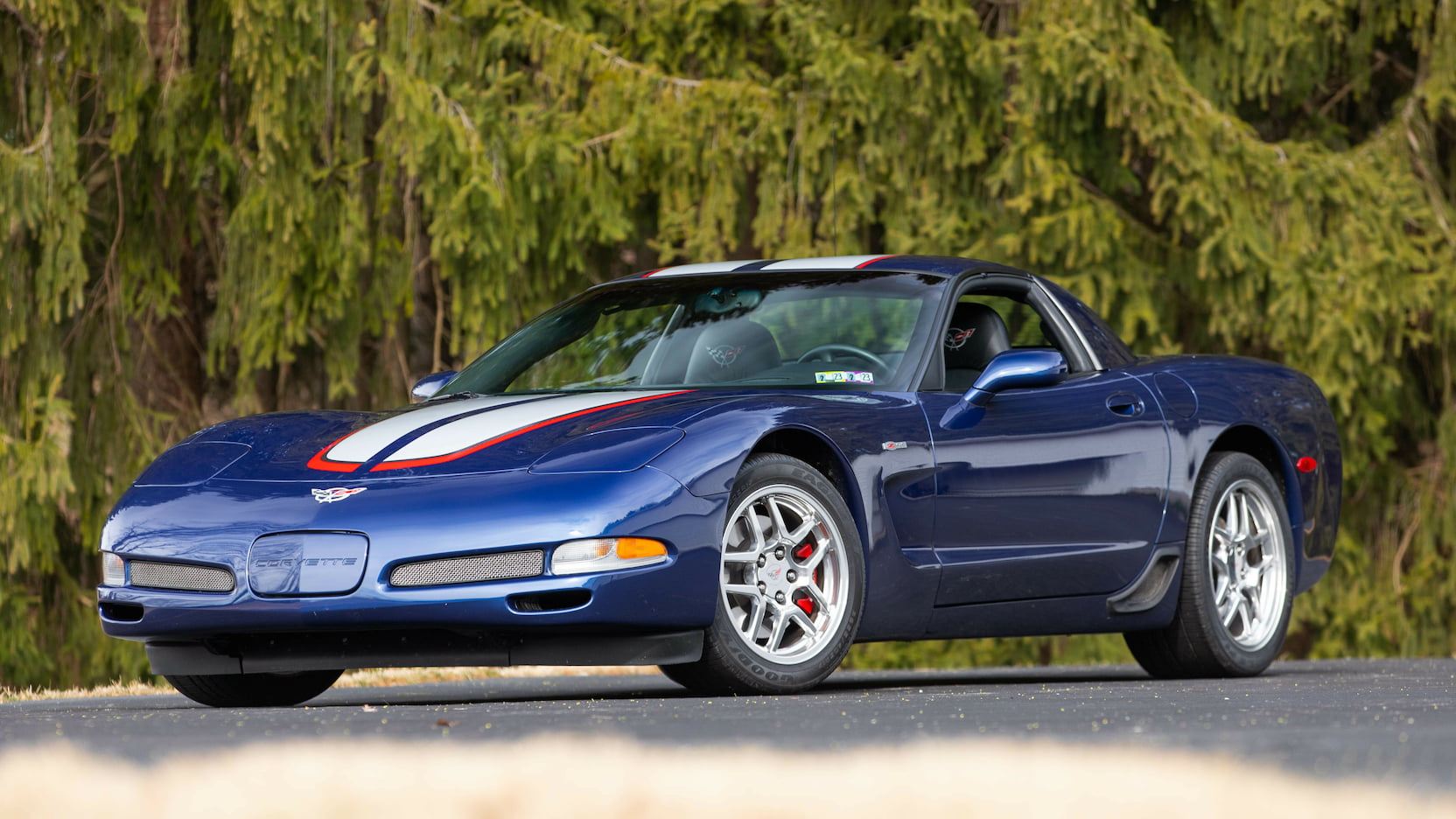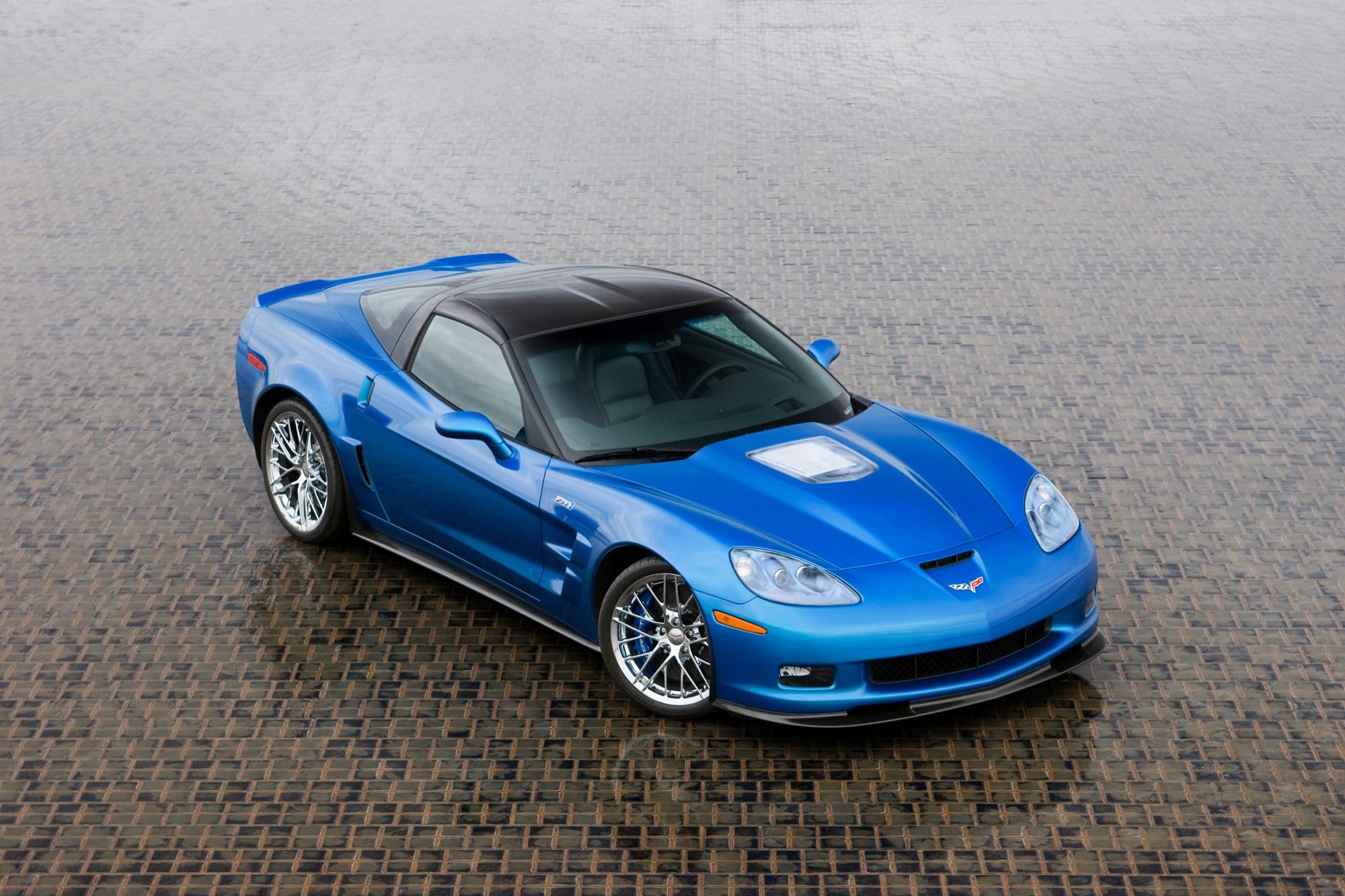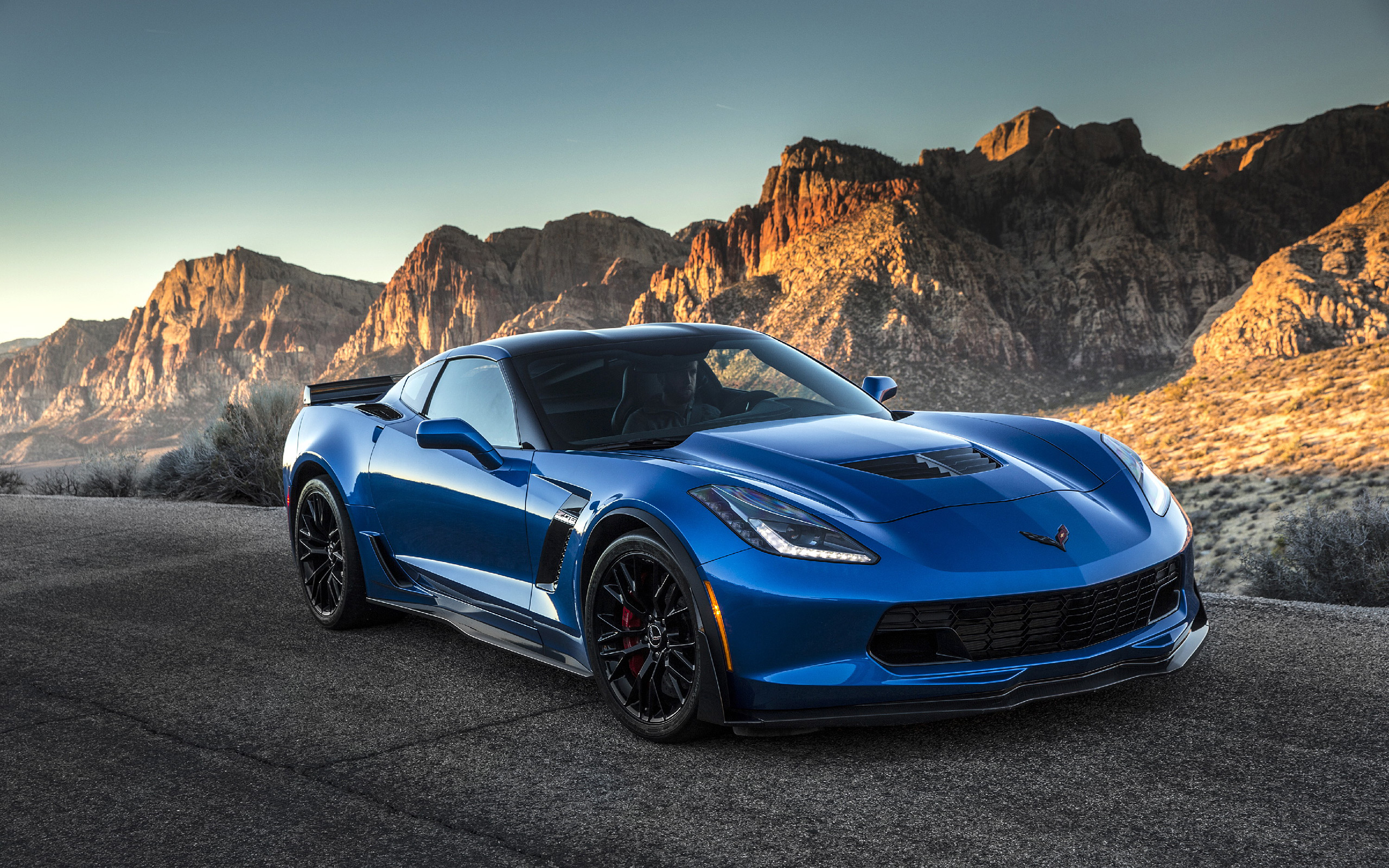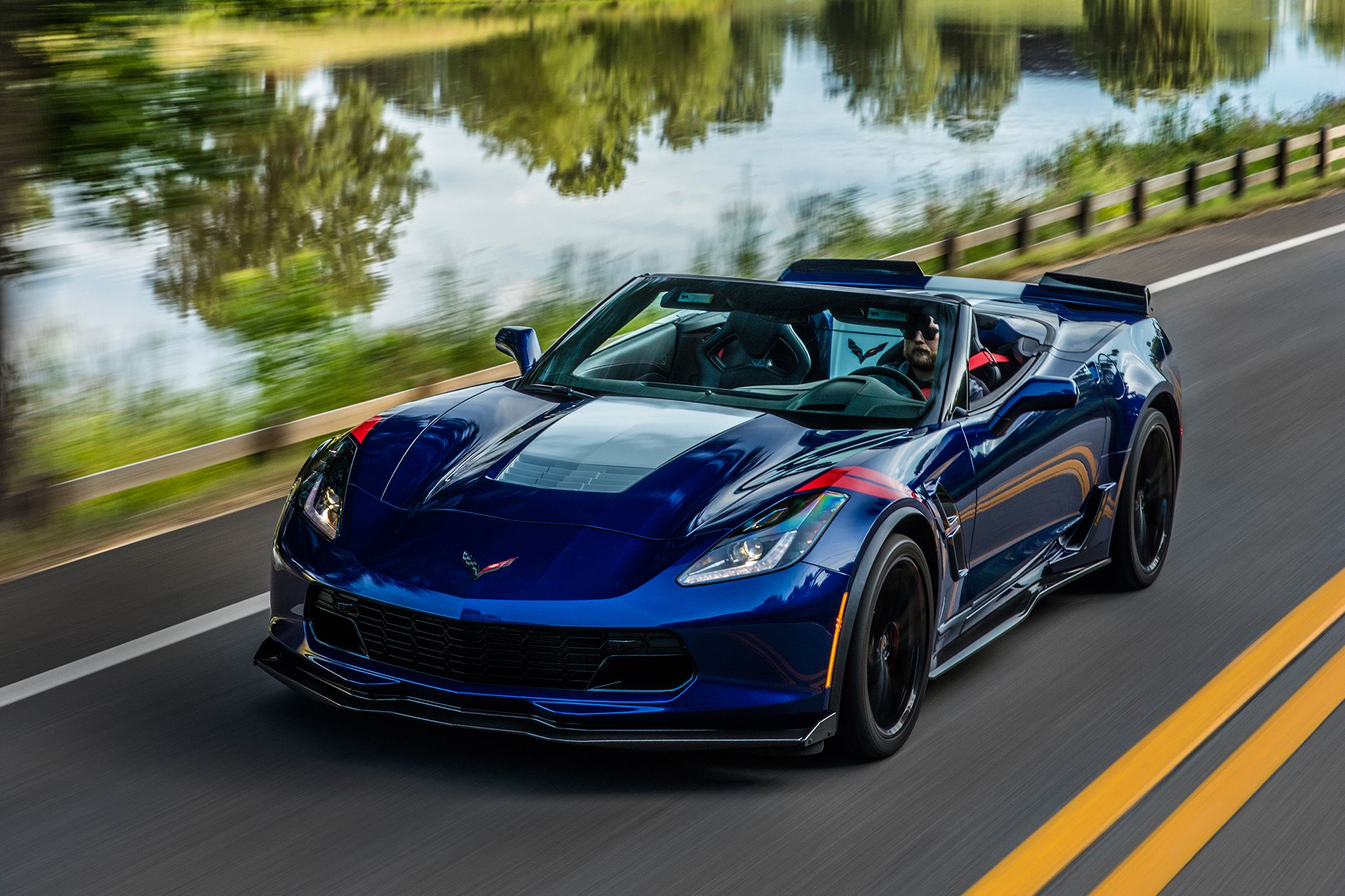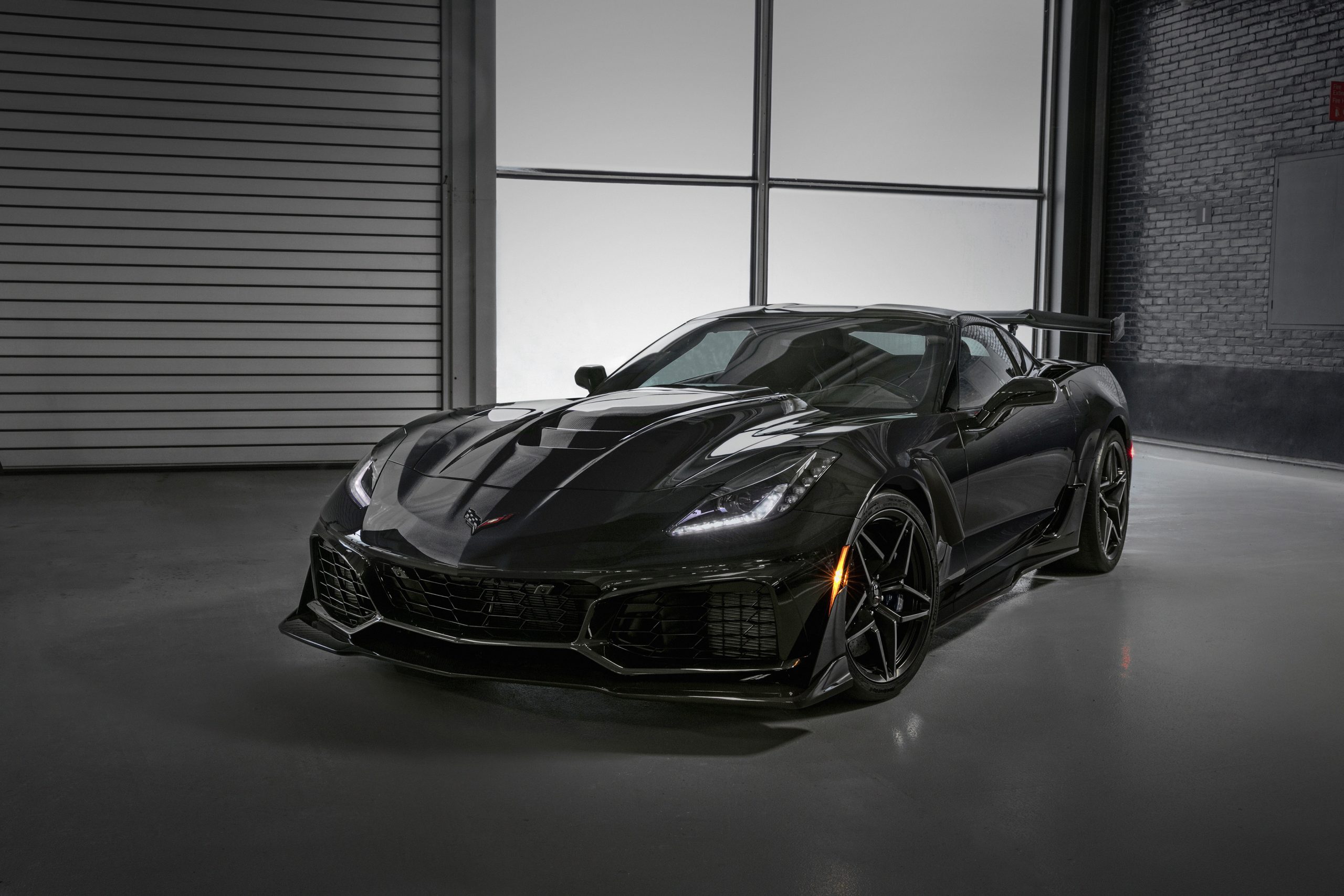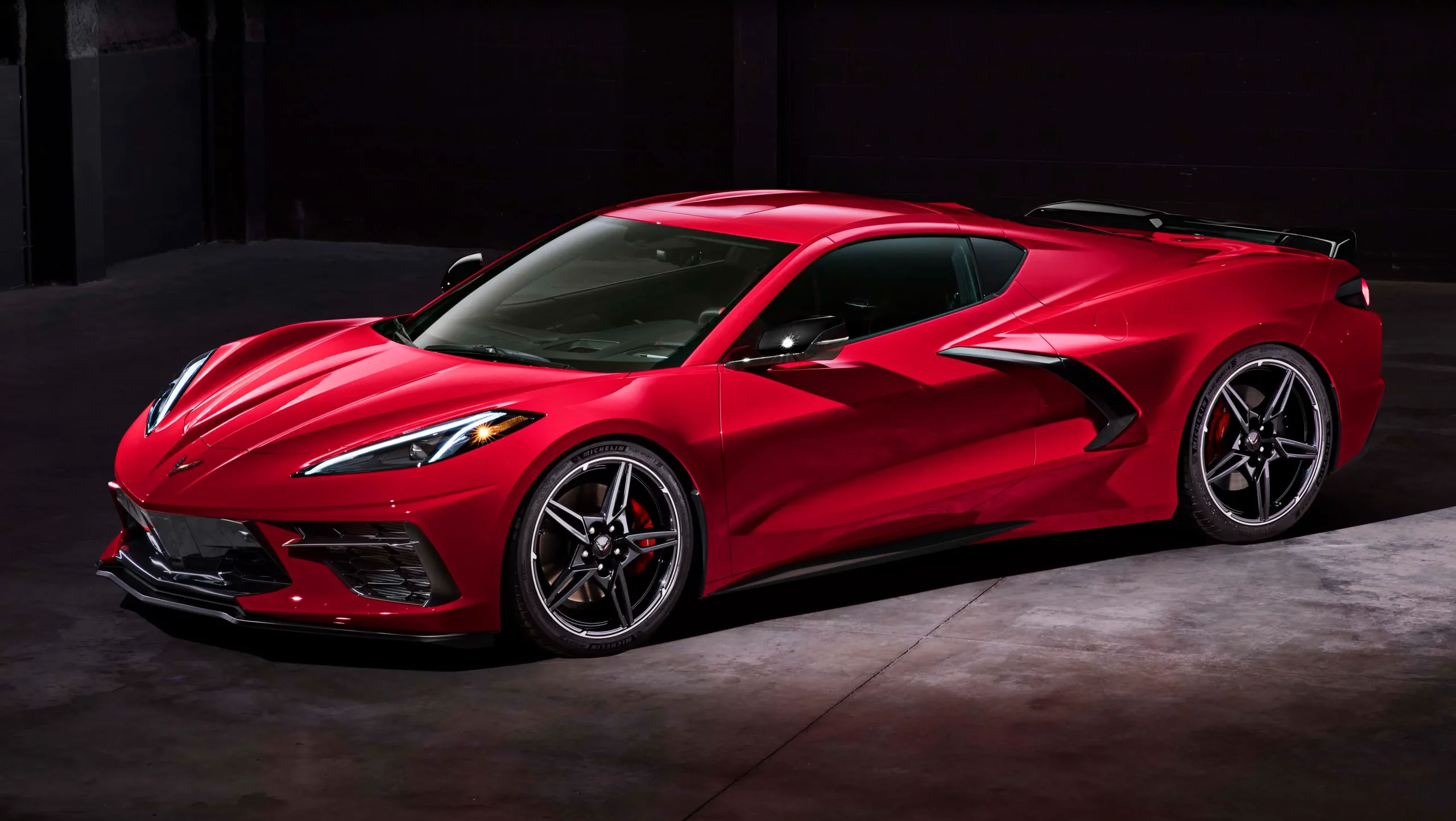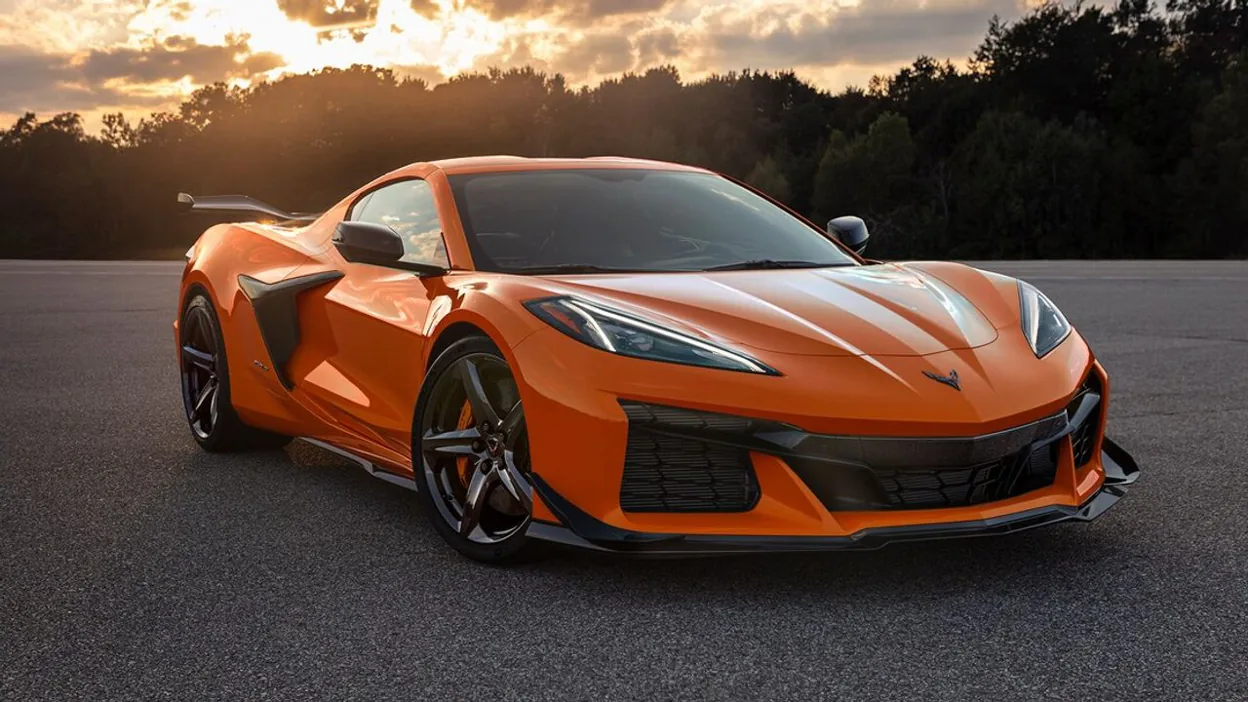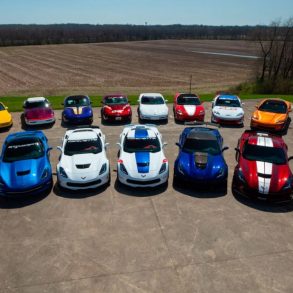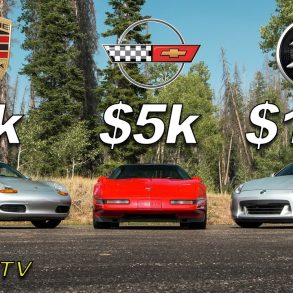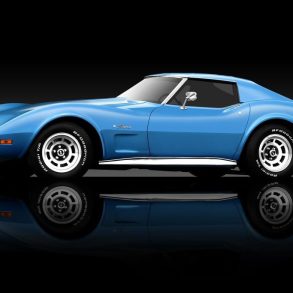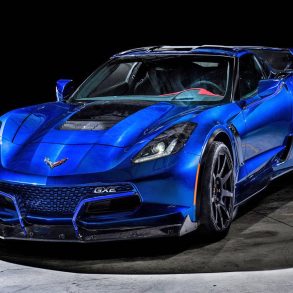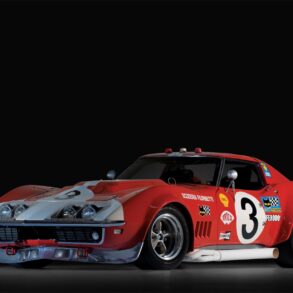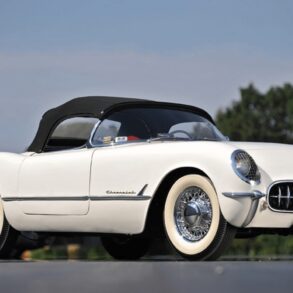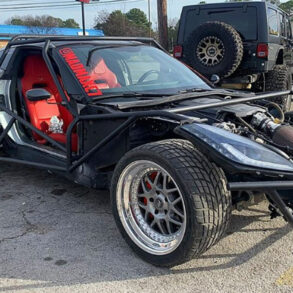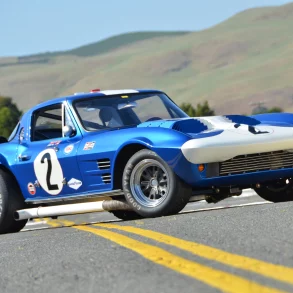The Ultimate List of The Greatest Corvettes Ever Made
During Corvette’s nearly 70-year long illustrious run, the number of groundbreaking achievements that have been made and iconic cars that have been produced are nearly too numerous to count. Like every brand of performance vehicle, the Corvette has had its share of ups and downs. However, the true “American Sports Car” has achieved more highs during its rise to prominence than most. Today, the Corvette stands as a mainstay of precision performance, regularly competing with, and sometimes even overshadowing its European counterparts. It may have taken nearly three-quarters of a decade to reach this pinnacle (with many memorable stops along the way), but the following is a list of some of the most legendary Corvettes to ever hit the street and track, both production and specialty alike.
1955 C1 Corvette V8
Saved the Corvette from certain doom.
If it had not been for the significant improvements made during the Corvette’s 1955 production year, the brand likely didn’t stand a chance of continuing to build a legacy that included the other 24 cars on this list. When Chevrolet included the 265 cubic-inch V8 as an option in 1955, it saved the Corvette from the certain doom that was looming over it, due in large part to its reputation as being horrendously underpowered. Complete with a 3-speed transmission, the 1955 Corvette posted a vastly improved 0-60 MPH time of 8.2 seconds.
1956 Corvette SR2
Ahead of its time and a testbed for cool things to come across the range.
The SR2 Corvette made waves as it hit tracks far and wide in an attempt to showcase the potential of the line. By design, the 1956 SR2 stood as a concept car, effectively showcasing technological improvements that were to come. One of which was the upcoming “Fuelie” injection system that would be seen in the form of an option on the following year’s model. The SR2 even went on to set a speed record at Daytona Beach, which stands as a positive showing out of what was once seen as a prototype.
1957 Corvette Fuel Injected
Duntov’s inspired fuel-injected rendition produced an impressive 259 HP.
After the introduction of the 265 cubic-inch V8 in 1955, Chevrolet sought to further up the ante and further cement the Corvette as a true American sports car. During this process, Chevrolet introduced a 283 cubic-inch engine for the 1957 production year. Though carbureted options did exist, the true star of this show was Duntov’s inspired fuel-injected rendition that produced an impressive 259 HP. At that time, a fuel injected engine was completely revolutionary in the domestic market.
1961 Mako Shark Concept Car
A direct look into the eyes of the Corvette’s future.
In 1961, Larry Shinoda and Bill Mitchell designed a Corvette that was completely revolutionary in design. This car, ultimately named the Mako Shark, would go on to be the predecessor to the upcoming second-generation Corvette. With its sleek side-exit exhaust and legendary blue-grey color scheme, the Mako Shark was a huge success on the auto show circuit, essentially giving spectators a direct look into the eyes of the Corvette’s future.
1963 Corvette Sting Ray
Iconic split rear window design.
The 1963 Sting Ray featured a beloved one-year-only body feature that is still sought after by collectors today. The split rear window design of the 1963 Sting Ray was undoubtedly aesthetically pleasing. However, the design was canned before the following year’s production run, as it was cited as a visibility issue. The 1963 Sting Ray also featured a 327 cubic-inch V8 that turned out an impressive 360 HP and was coupled with a 4-speed manual transmission.
1963 Corvette Grand Sport
V8 that turned out an incredible 550 HP. Too bad they made so few.
By 1963, the Corvette engineering team headed up by Arkus-Duntov had made it their mission to push the bounds of just what a Corvette could be. This led to the development of the 1963 Grand Sport, which was initially intended for use at Le Mans. The 1963 Grand Sport featured a 377 cubic inch, aluminum block V8 that turned out an incredible 550 HP. Unfortunately, GM’s enforcement of the AMA ban on racing halted the intended 125 car production run, resulting in just five Grand Sport Corvettes actually being produced.
1965 Corvette Sting Ray
Introduction of fuel injection and disc brakes. Both very helpful.
The 1965 Sting Ray was a substantial piece of Corvette history for more than one reason. This model marked the first implementation of a much-needed 4-wheel disc brake system within the Corvette line. This made for a vast improvement in heat dissipation during heavy braking applications, while drastically reducing stopping distance altogether. The 1965 model year also marked the last year of the Corvette’s use of fuel injection, until its re-emergence 20 years later.
1965 Mako Shark II Concept
Sexiest concept car I’ve ever seen in my life.
Just as the first rendition of the Mako Shark foretold the coming of the second generation Corvette, the Mako Shark II gave the world its first glimpse of the third generation Corvette yet to come. Designed by Bill Mitchell, the Mako Shark II, built of a chassis harvested from the original Mako Shark, debuted at the 1965 New York Auto Show to much fanfare. The Mako Shark II didn’t just foretell the coming C3’s exterior however, as many of the vehicle’s cabin features were similar to those that were eventually found in later renditions of the Corvette.
1967-1969 Corvette L88
The pinnacle. Legend.
In much the same fashion as had been previously done with the earlier Grand Sport Corvette, 1967 saw Arkus-Duntov and his team attempt to fly under the radar of the AMA ban once again. Their new project was the “race ready” 1967 L88 Corvette. The L88 featured a 427 cubic-inch big-block configuration that was billed as producing 435 HP, although testing proved this number to be closer to 550 HP. The L88 had a production run of only three years, and only 216 such cars were ever produced.
1969 Corvette ZL1
One of the rarest production Corvette ever built. One of the coolest too.
The 1969 ZL1 is one of the rarest production Corvette ever built. The option was only offered for the 1969 production year, and only two such cars were ever produced. The ZL1 featured an all-aluminum version of the 7.0L L88 big-block and was billed as producing 430 HP (though later testing proved this number to be closer to 460 HP.) This tenacious powerplant yielded a 0-60 MPH time of just 3.9 seconds.
1970 Corvette LT-1
How about 370hp thanks to use of an awesome Holly 4-barrel unit
In 1970, Chevrolet began to offer an alternative rendition of their popular 350 cubic-inch engine. The LT-1, as it was designated, placed a new spin on the 350’s fuel delivery ideology by swapping its previously used carburetor for the same Holly 4-barrel unit that was designated for the Corvette’s big-block offerings. This change boosted the engine’s output to a respectable 370 HP.
1978 C3 Corvette
Lots of improvements across the board created one sweet ride.
The 1970’s are remembered by many as an undeniable rough patch in Corvette history. However, after an extended period of less than innovative offerings, 1978 provided hope to Corvette lovers worldwide. Changes to the 1978-year model included interior modifications, enlargement of the fuel tank, the addition of a glove box, and the return of the Fastback design. The beefed-up FE7 suspension package also became available for the 1978 production year for those that demanded superior handling.
1984 C4 Corvette
Showed definite strides in technology, especially in its much-improved handling.
In 1984 Corvette die-hards were finally able to get behind the wheel of the long-awaited C4. As with the first production year of successive generations, the C4 did not come without its share of growing pains. However, the 1984 C4 showed definite strides in technology, especially in its much-improved handling. The C4 was hailed as being able to handle road courses with the same level of superiority as the Porsches of the day. A total of 51,547 1984 Corvettes were sold, making it the second-best year of sales to date.
1986 C4 Corvette
By 1986, GM had fine-tuned and refined the C4 to perfection.
As the Corvette’s fourth-generation made its way into the third year of production, the GM design team had set out to fine-tune and refine the C4 to perfection. The 1986 Corvette featured aluminum heads, as opposed to the previous cast iron heads of old, yielding a 5 HP gain. The C4 also saw modifications to its instrument cluster to aid in daytime visibility. 1986 was also the first year that Anti-lock brakes, as well as anti-theft systems, became standard on the Corvette. The most significant improvement made for the 1986 model year was the re-introduction of a convertible top option. Chevrolet had previously discontinued production of Corvette convertibles with the 1975 model year. The return of this option was celebrated as the 1986 Corvette Convertible served as the official pace car at that year’s running of the Indianapolis 500!
1988 Callaway Sledgehammer
Reached a top speed of 254.7 MPH, making it the world’s fastest street-legal car.
While not a truly singular creation of GM, the 1988 Callaway Corvette has a history so rich that it simply cannot be left off of this list. Callaway is a performance car modification firm that has been around since 1977. Through their rich history, they have often sought to modify Corvettes to a level that far exceeds what is fathomable. This was exactly the case when they fashioned a custom-built 1988 Corvette for the sole purpose of generating a level of performance that no man had yet seen. With the help of a NASCAR spec engine block, and outfitted with twin-turbos, the Sledgehammer, driven by John Lingenfelter, reached a top speed of 254.7 MPH, making it the world’s fastest street-legal car. The record remained intact for 22 years until it was broken by Bugatti in 2010.
1990-1995 Corvette ZR-1
Out of the blue, the Corvette was elevated to supercar status thanks to the ZR-1.
When the ZR-1 Corvette burst onto the scene in 1990, heads turned. As if out of the blue, the Corvette was elevated to supercar status. The twin-cam LT5 engine yielded a mind-numbing 375 HP and laid down a 0-60 MPH time of just 4.9 seconds. Many heralded the ZR-1’s release as the Corvette’s return to its previous performance-minded days of splendor. With its new level of vigor and tenacity, the ZR-1 leveled the playing field with Ferrari and Porsche as a competitor on the worldwide stage.
1997 C5 Corvette
Corvette finally lives up to its performance, handling and design potential.
After a 13-year production run, the C4 was relieved of its duties, as the C5 debuted in 1997. This highly anticipated fifth-generation Vette showcased new, highly styled body lines, increased space in the driver compartment, and a completely re-engineered dash. However, the C5’s crowning achievement came in the form of its significantly improved performance. The C5 featured the new LS1 engine that turned out 345 BHP and logged 0-60 MPH times of 4.72 seconds.
1999-2004 Corvette C5-R
Racked up success in both the US, as well as at LeMans. A true winner.
After a long history of resistance toward the production of a factory-backed Corvette race program, Chevrolet finally relented and jumped into the racing scene with the C5-R in 1999. Within short order, the C5-R had gained iconic status, racking up success in both the US, as well as at LeMans. Many credit the C5-R with bolstering the Corvette’s image, thereby bringing its relevance in the top tier performance car market.
2001-2004 Corvette Z06
A true world-class super car that could rival the best from Germany
Just as it had in previous generations, the Corvette continued down the path of improvement with every successive year of the C5’s tenure. The 2001 Corvette Z06 was equipped with a 385 HP LS6, a rear transaxle, and aluminum chassis. In 2002 the Z06’s output was boosted to 405 HP. This upgrade bolstered the C5’s 0-60 MPH time to an astonishing 3.9 seconds and led to a quarter-mile time of 12.4 seconds! The Z06 proved beyond doubt that the Corvette was no longer just an American-made sports car but rather a true world-class super car that could rival the performance and handling of cars two-to-three times its pricepoint.
2004 Corvette Commemorative Edition
Design touches make this one sexy Corvette.
As the C5 prepared to drive off into the sunset, GM sought to provide the best send-off possible for the generation that had revolutionized the Corvette in so many ways. One way that this was accomplished was by commemorating the substantial racing success that the C5-R had experienced both domestically and, perhaps most importantly, at the 24 Hours of Le Mans. The 2004 Commemorative Corvette featured LeMans Blue paint, red-edged silver stripes, and alloy wheels. The Commemorative Corvette also featured “LeMans 24-Hour” emblems on both the nose and tail of the car.
2009-2013 Corvette ZR1
Pushed the envelope of the C6 platform. Dynamite car.
As with its previous iteration, the 2009 ZR1 was specifically developed to push the envelope of Corvette power and performance to true super-car level status. When introduced in 2008 as the “Blue Devil,” it left everyone in a state of disbelief. GM followed through up the “Blue Devil” prototype with a production model the following year. With a 638 HP, 6.2L LS9 super-charged engine as the powerplant of choice, the mighty ZR-1 clocked a 0-60 MPH time of 3.4 Seconds. The ZR1 also posted a top speed of 205 MPH, marking the first time a production Corvette exceeded the 200 mph barrier. To reduce weight and maximize speed, carbon fiber was used in the production of the hood, roof, and fenders.
2015 – 2019 Corvette Z06
The best front-engined Z06 ever made. Does everything well.
With the release of the Stingray in 2014, the Corvette had reached new heights in styling, technology and performance. GM did not intend to let this momentum slow down, as they entered their sophomore year with the C7. Instead, for the 2015 production year, they brought back their track-inspired Z06 model. The 2015 Z06 was innovative for several reasons, but perhaps the most notable improvements was the introduction of the 650 horsepower, supercharged LT4 engine and the addition of an 8-speed automatic transmission option that allowed drivers to achieve world-class shift times. With a 0-60 MPH time of 2.95 seconds, there’s no doubt that this monster is sure to impress. More than that, GM claims the 8-speed can run a quarter mile in just 10.95 seconds! Starting with its introduction in the 2015 production year, the Z06 was offered in both coupe and convertible models, allowing owners to tailor-suit their new Z06 Corvette to their style and personal tastes.
2017 Corvette Grand Sport
The sweet spot. Balance, poise, power and great style touches.
In a tribute to the Arkus-Duntov designed Grand Sport of the 1960s, GM turned out their modern version of the iconic classic for the 2017 production year. The 2017 Grand Sport features a level of performance that would have received an enthusiastic nod of approval from Duntov himself were he still alive to witness it. More than that, its a spectacular blend of performance and appearance – following the mantra “form follows function.” With a whopping 460 HP, the Grand Sport posts a 0-60 MPH time of 3.6 seconds and can pull 1.6 gs of cornering force due to its substantially upgraded suspension system.
2019 Corvette ZR1
“Absolute power corrupts absolutely”
The ZR1 stands as a true testament to the fact that just when you think it can’t get any better, the Corvette design team pulls yet another rabbit out of their hat. Powered by a 6.2L supercharged V8 behemoth, the ZR1 yields an outstanding 755 HP and 715 ft./lbs of torque. With a 0-60 MPH time of 2.85 seconds, the ZR1 will give the performance buff-at-heart all they desire and more. With a top speed of 212 MPH, it’s impossible to sit behind the wheel of this supercar and not have a smile on your face.
2020 Corvette Stingray Z51
Mid-engined Corvette a revolutionary masterpiece. Long live the Corvette.
With supercar performance, an affordable price tag, and flashy styling, the 2023 Chevrolet Corvette honors the nameplate’s decades-old status as an automotive icon—but with a mid-engine twist. The current C8 is the first generation to have its naturally aspirated V-8 engine mounted behind the passenger compartment, which boosts Chevy’s halo sports car into the realm of exotic machinery. Its sharp handling and explosive acceleration are a match for sports cars costing tens of thousands more, but it’s also comfortable and refined enough to drive cross-country. The C8 is offered as both a convertible and a coupe, and the hardtop model has a roof panel that can be lifted off to allow the sun to shine in. Its cabin is cozy but comfortable, and there’s adequate trunk storage for groceries or luggage, making the Corvette an easy sports car to live with on a daily basis. Although the engine is in a new location—now behind the passenger compartment instead of in front of it—it remains a 6.2-liter V-8, albeit one making 490 horsepower and 470 pound-feet of torque. With the dual-mode performance exhaust that is part of the Z51 package, it makes 495 horsepower. The Z51 option also adds an electronic limited-slip rear differential, more aggressive brakes, and summer tires. An eight-speed dual-clutch automatic (a Corvette first) is the sole transmission. A zero-to-60-mph time of 2.8 seconds and the quarter-mile in 11.2 seconds at 122 mph. Even in base form, however, the new Corvette is capable of heroic handling and delivers big thrills on both road and track.
2023 Corvette Z06
Chevy builds a Ferrari 458 Speciale. WOW, just WOW.
The 2023 Z06 was designed and engineered to be a “precision tool” for the race track. While the DNA of every modern Corvette evolved from its racing car heritage, the new Z06 has blurred the lines between street car and race car to such an extent that it is hard to decide which environment this car is best suited for. Everything about this car – from its outward aesthetic, to its wider front and rear fascias, its exotic proportions, and its luxuriously appointed interior – all state unequivocally that the 2023 Z06 is not just a Corvette – but a car thats fully capable of holding its own in the supercar stratosphere. An all-new 5.5L LT6 engine sits at the heart of this beast. Rated at an incredible 670 horsepower, this NATURALLY ASPIRATED V8 is the most power engine of its kind to be introduced in ANY production car….EVER. The LT6 features an all-new, lightweight, flat-plane crankshaft designed to rev the engine to a staggering 8,600 rpm. It’s at this point that the engine hits its peak horsepower. Where past iterations of the Z06 relied heavily on superchargers to achieve this level of horsepower, Chevrolet’s engineers recognized an opportunity to return to a naturally aspirated engine without compromising horsepower or responsiveness. In fact, engine responsiveness and trackability were both identified as top priorities for the eighth-generation Z06.


